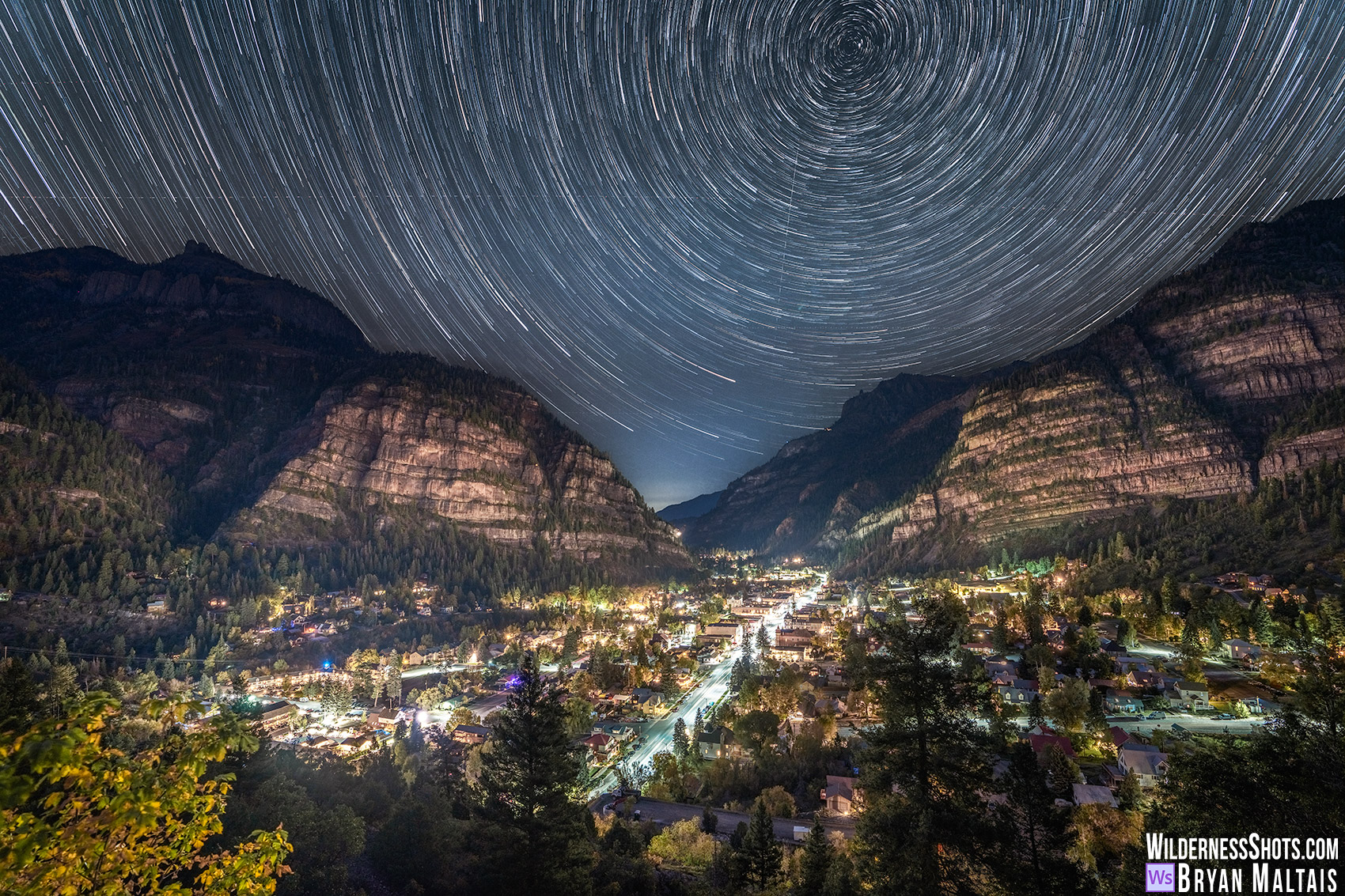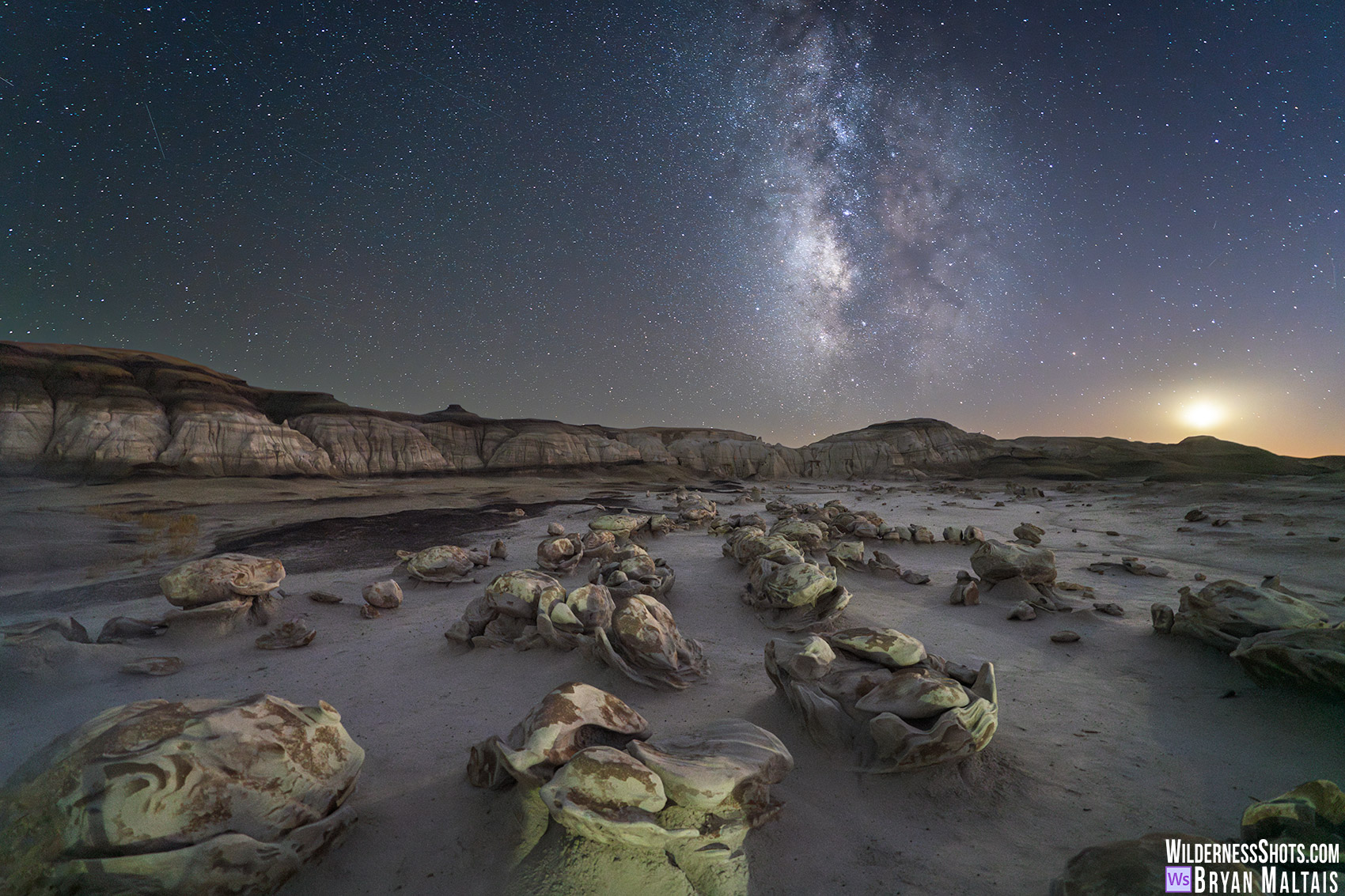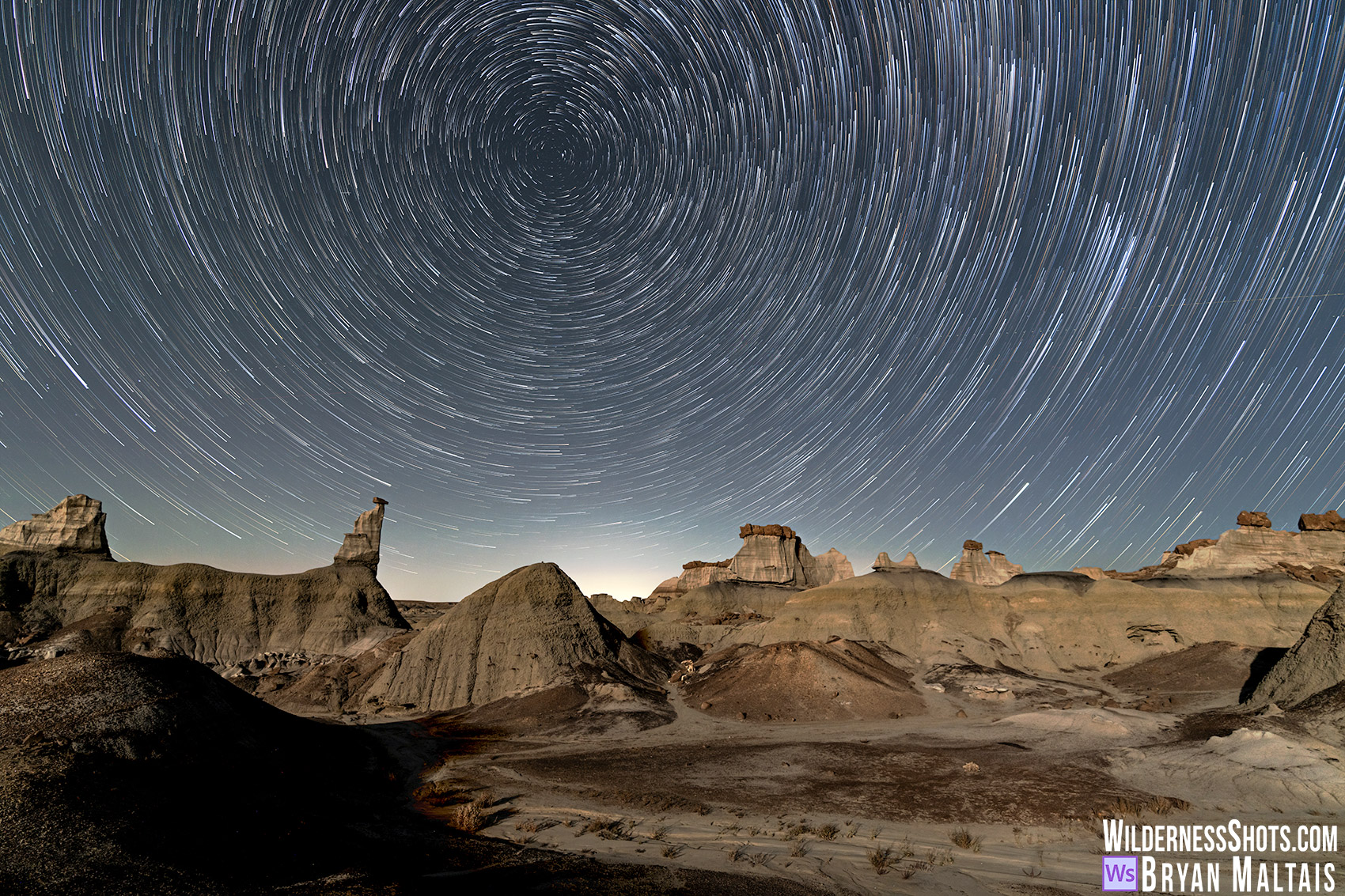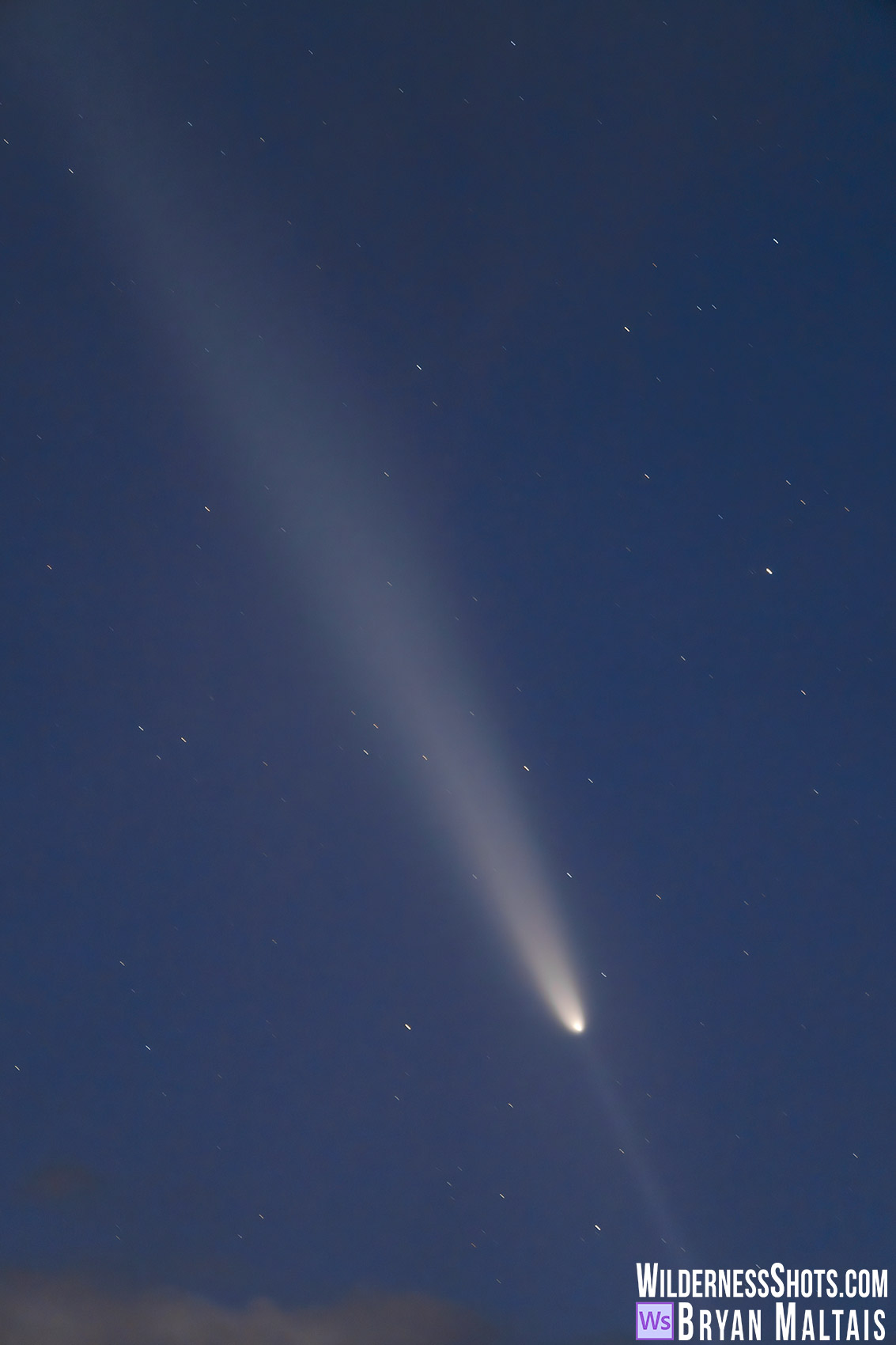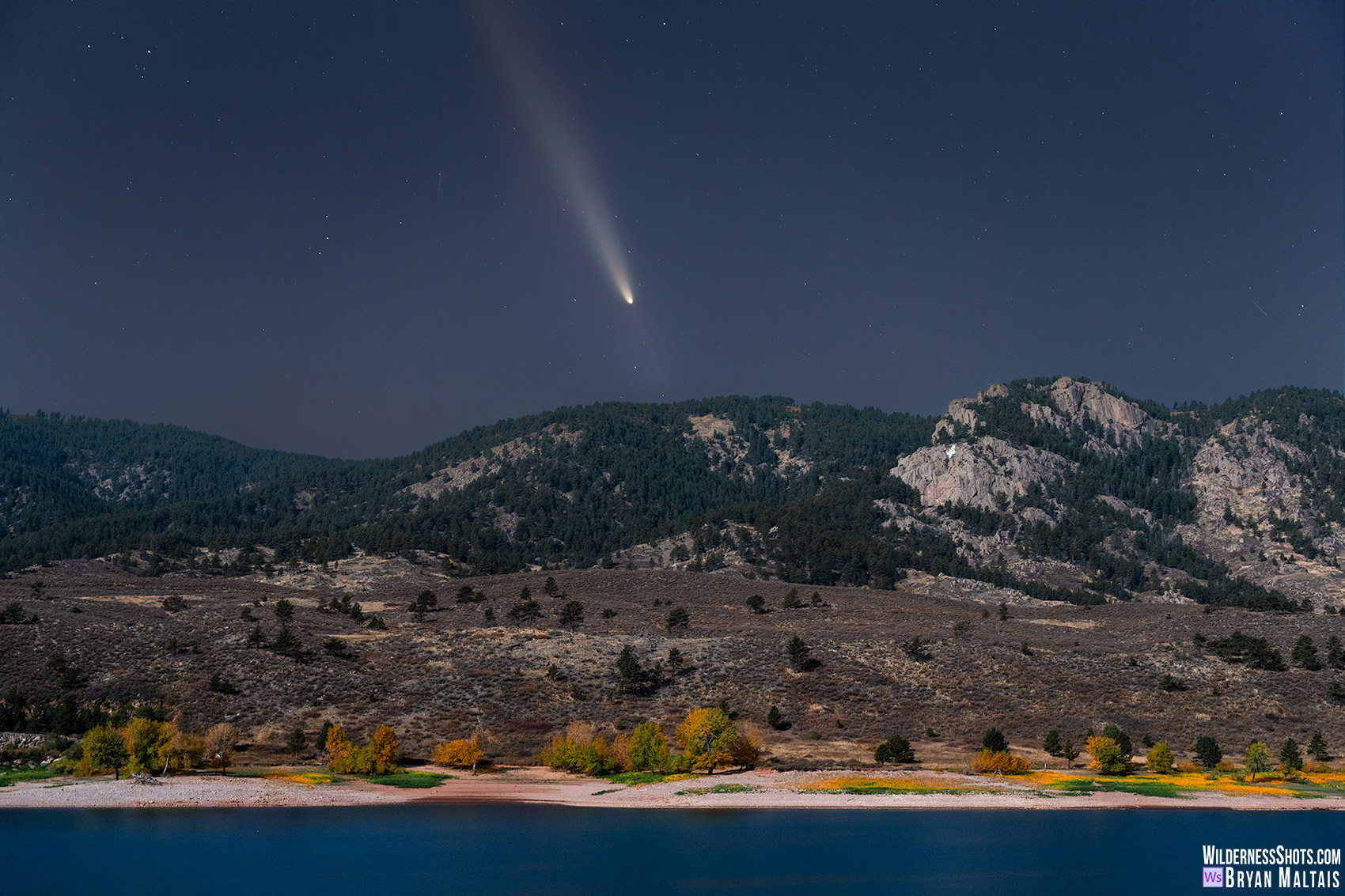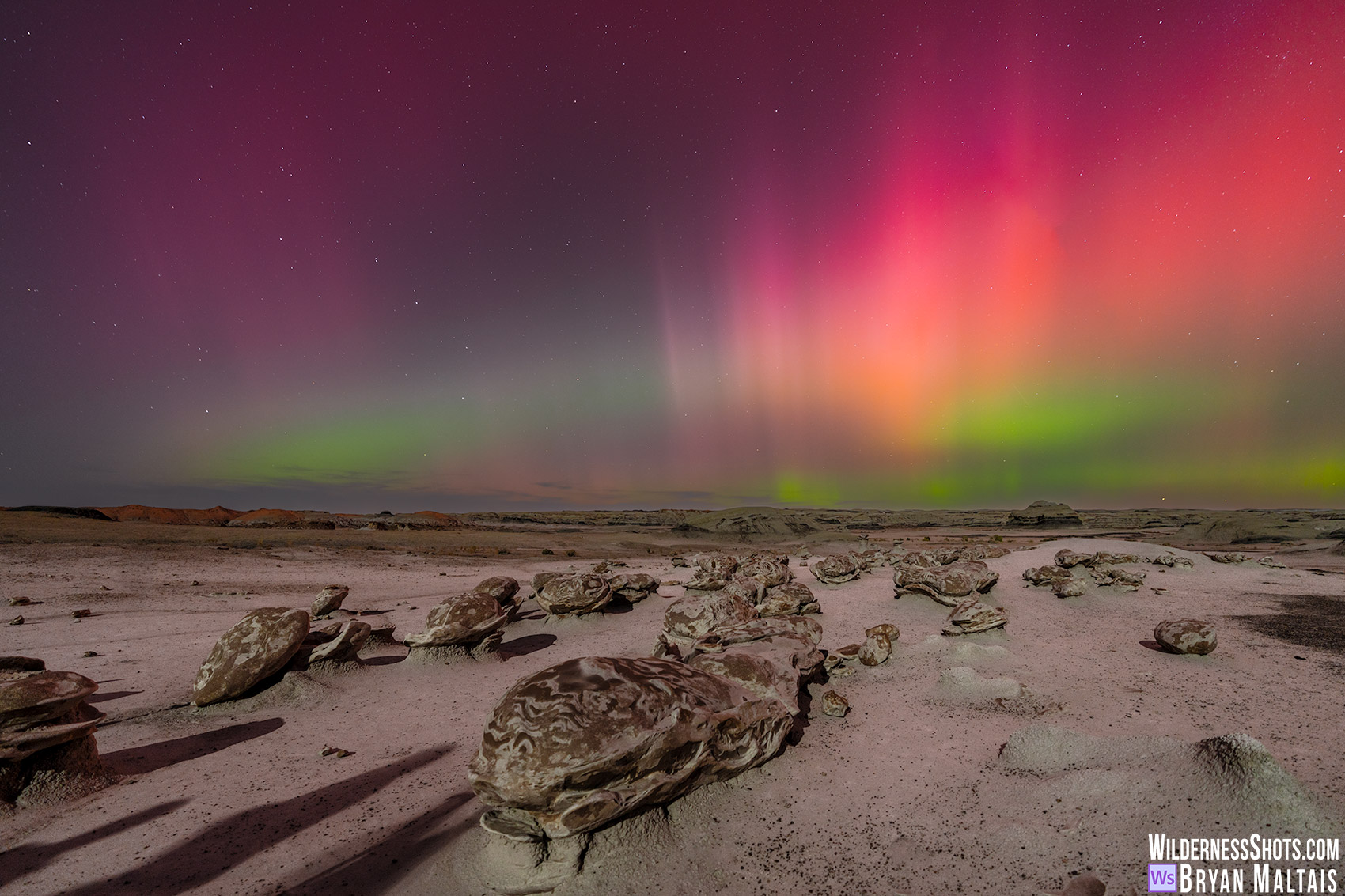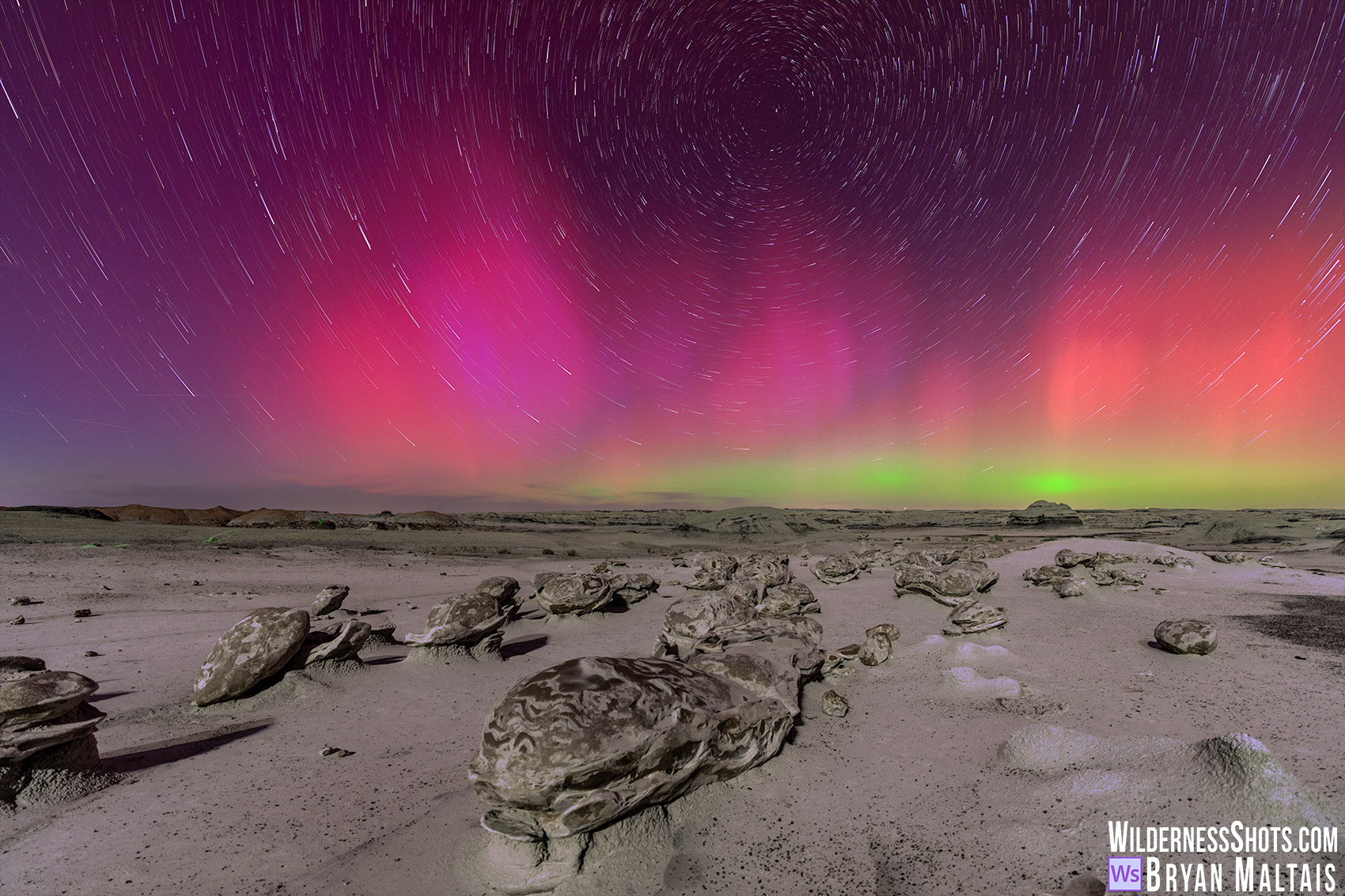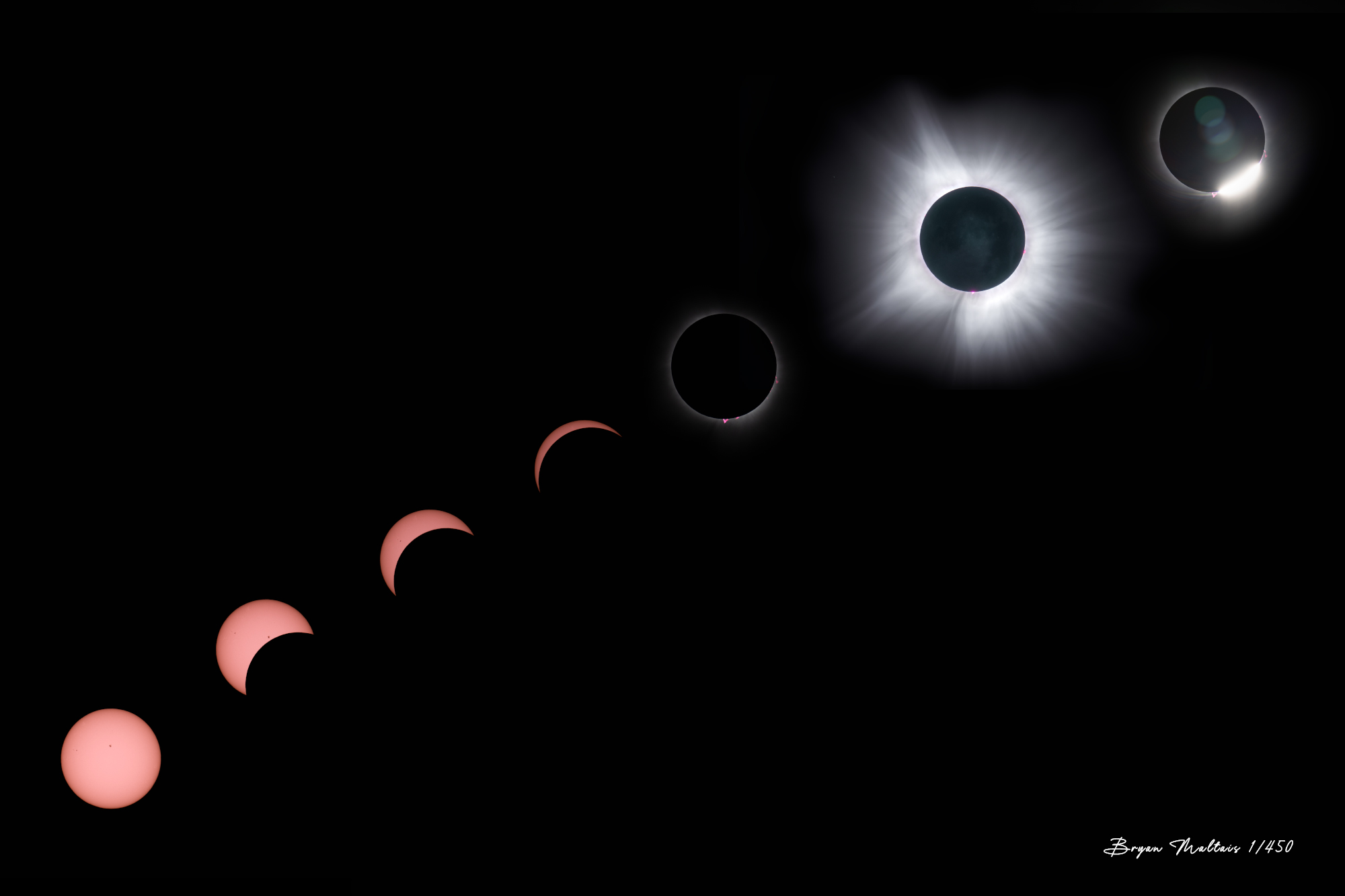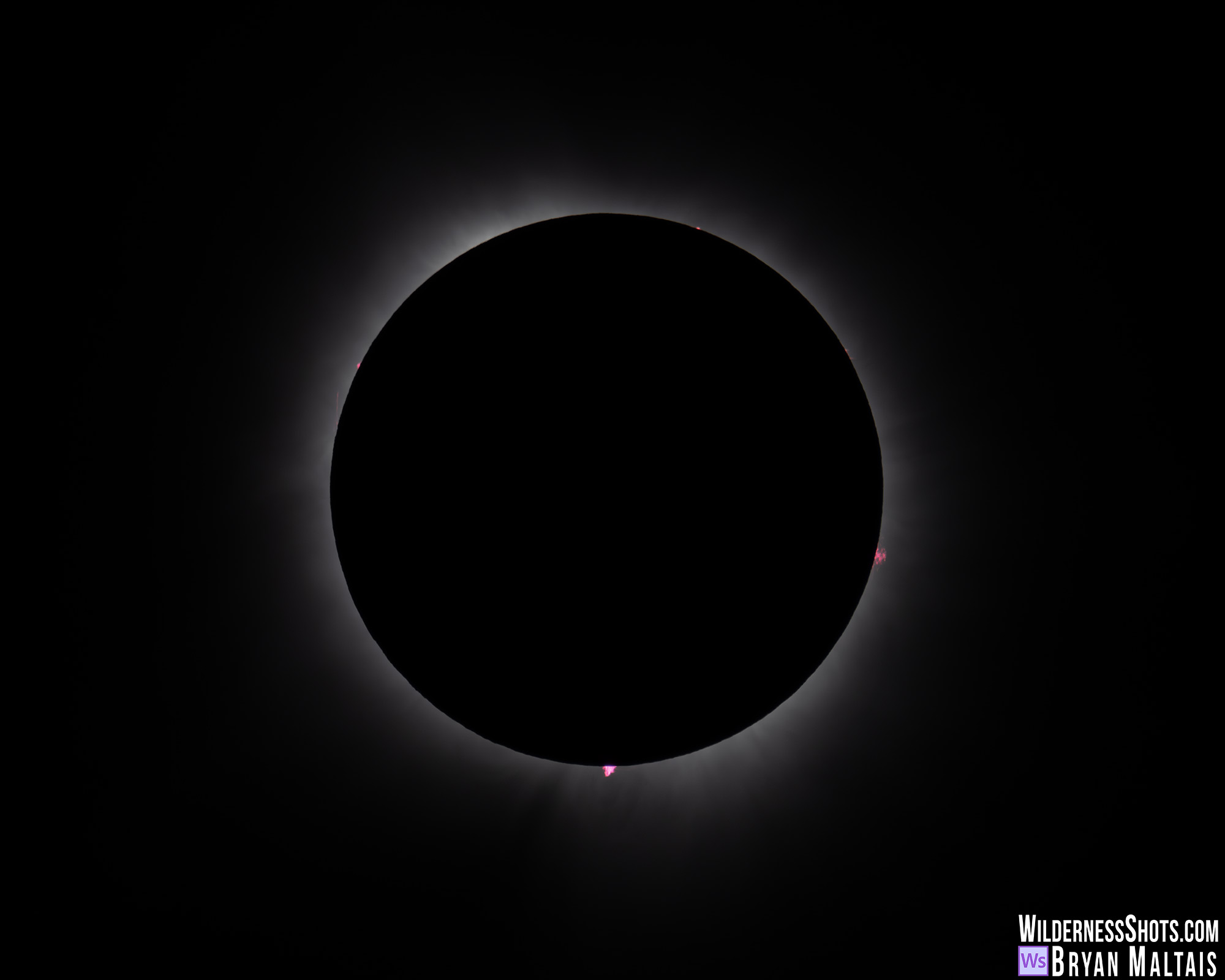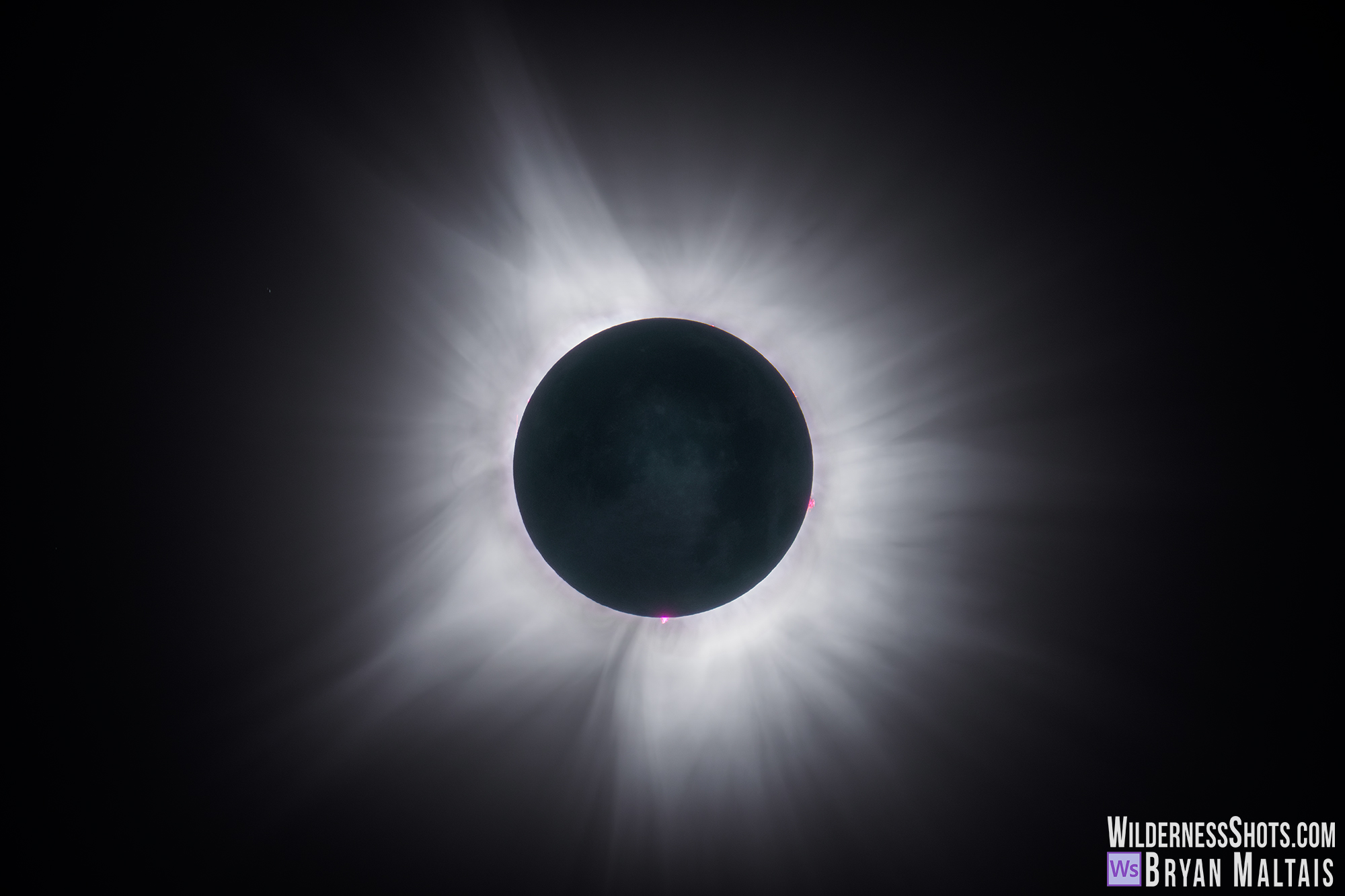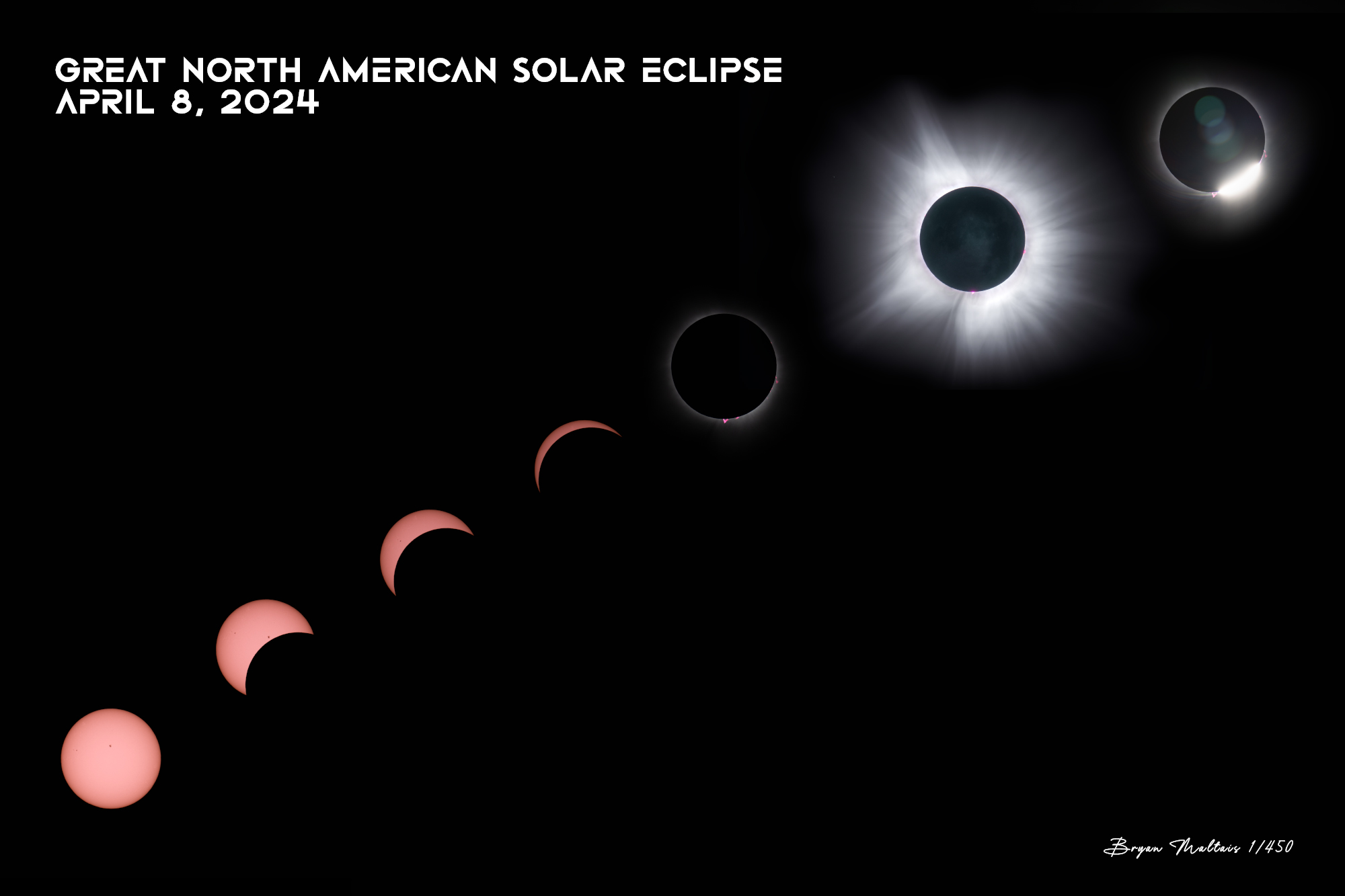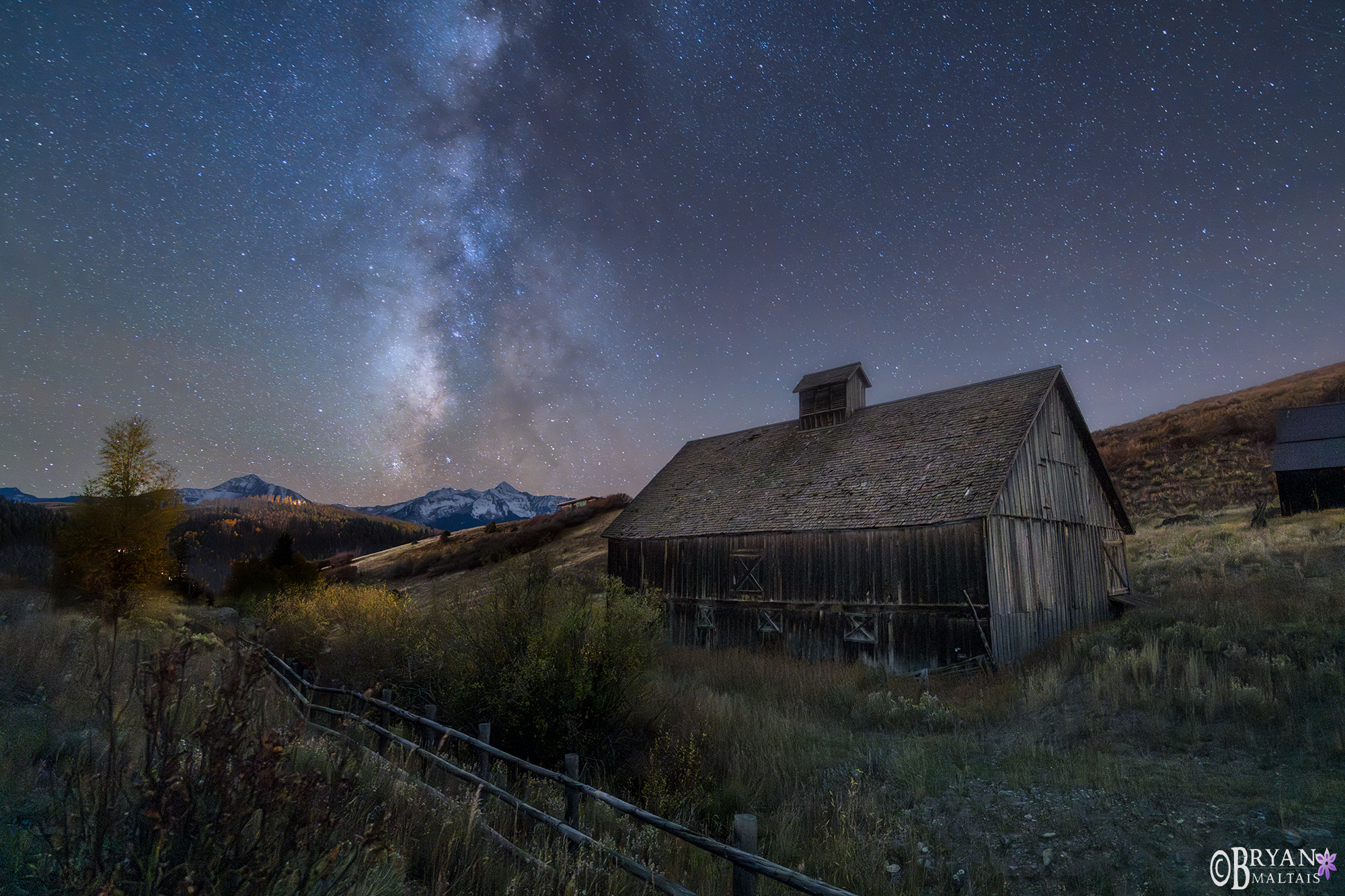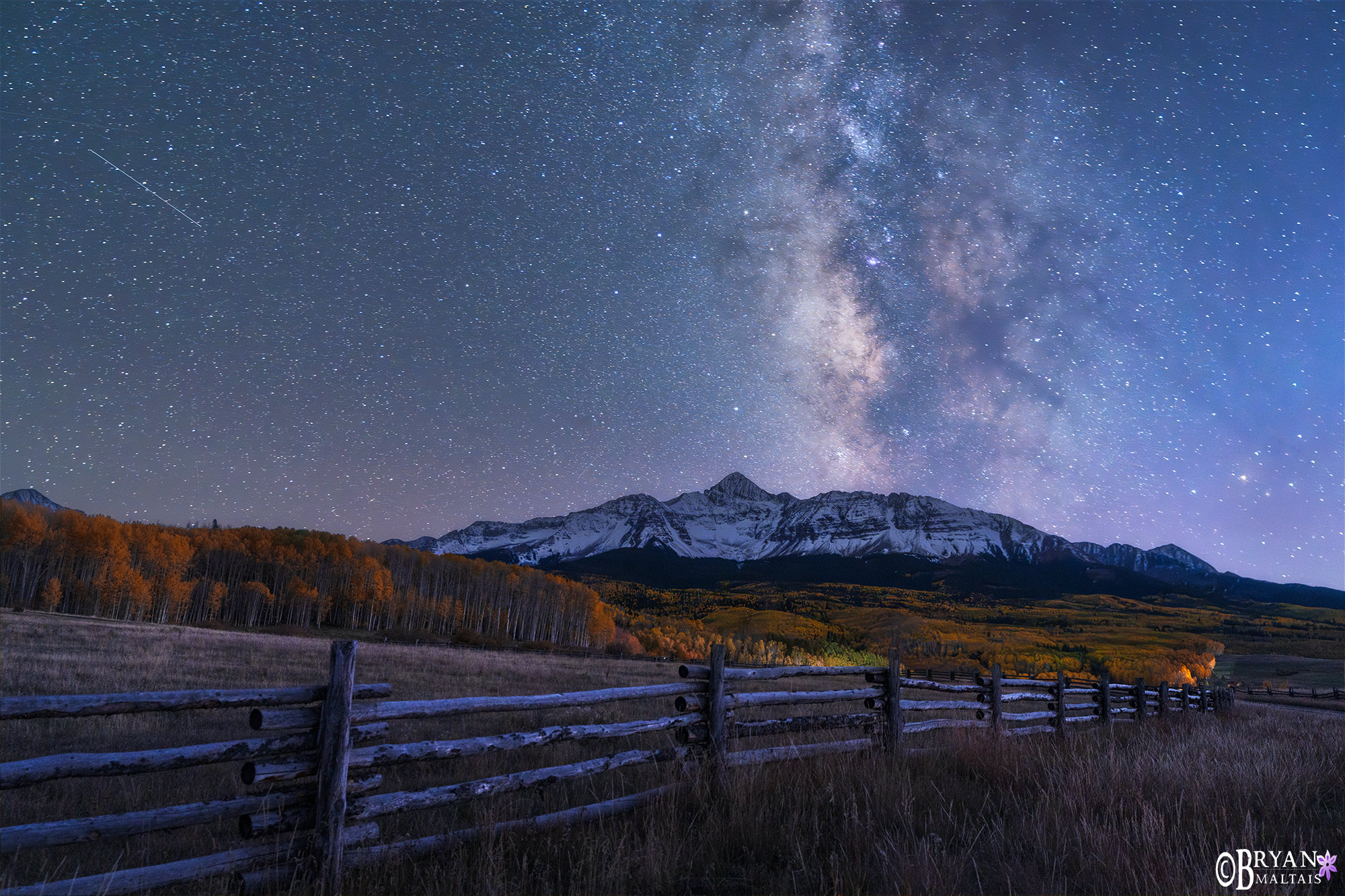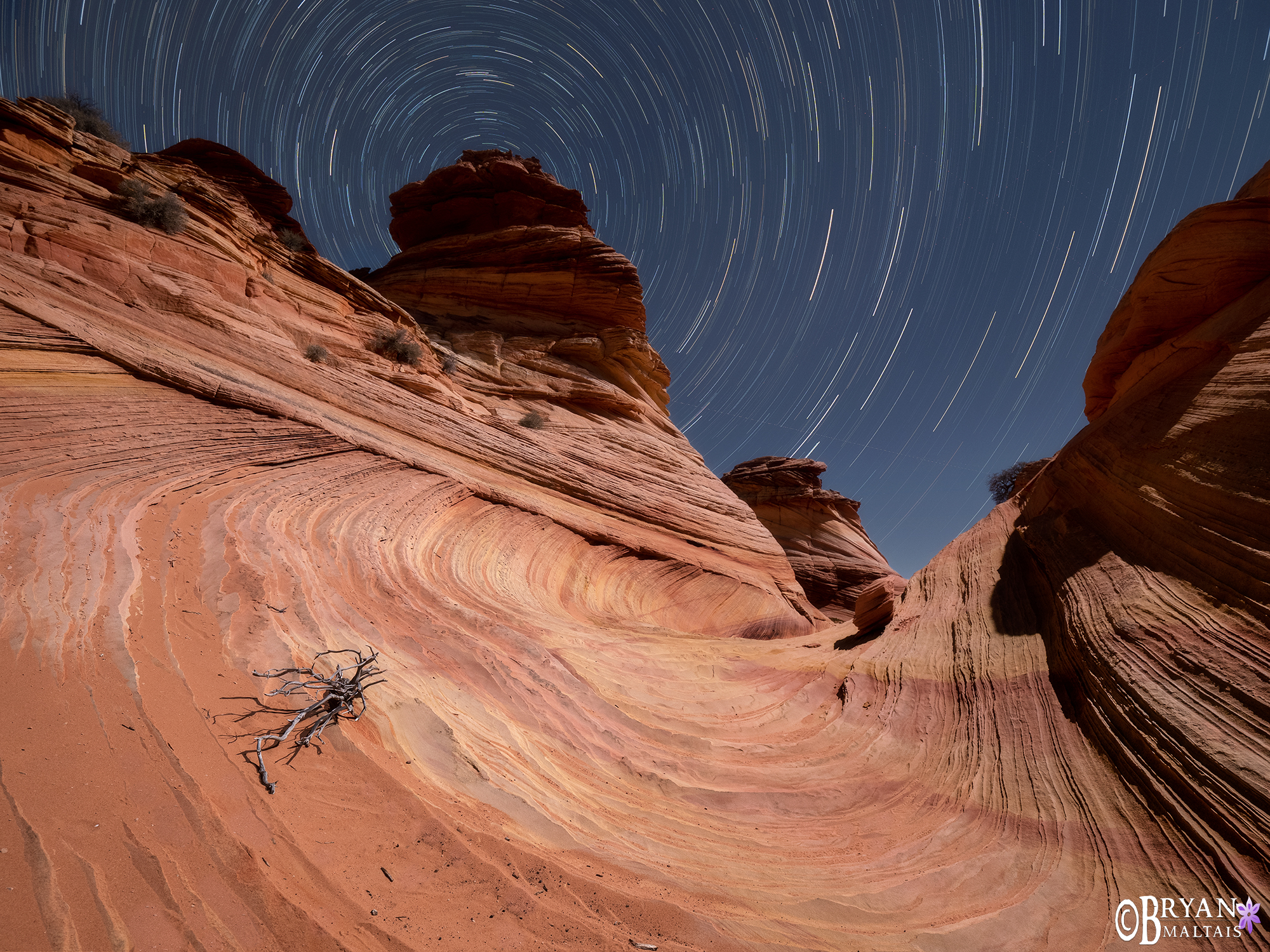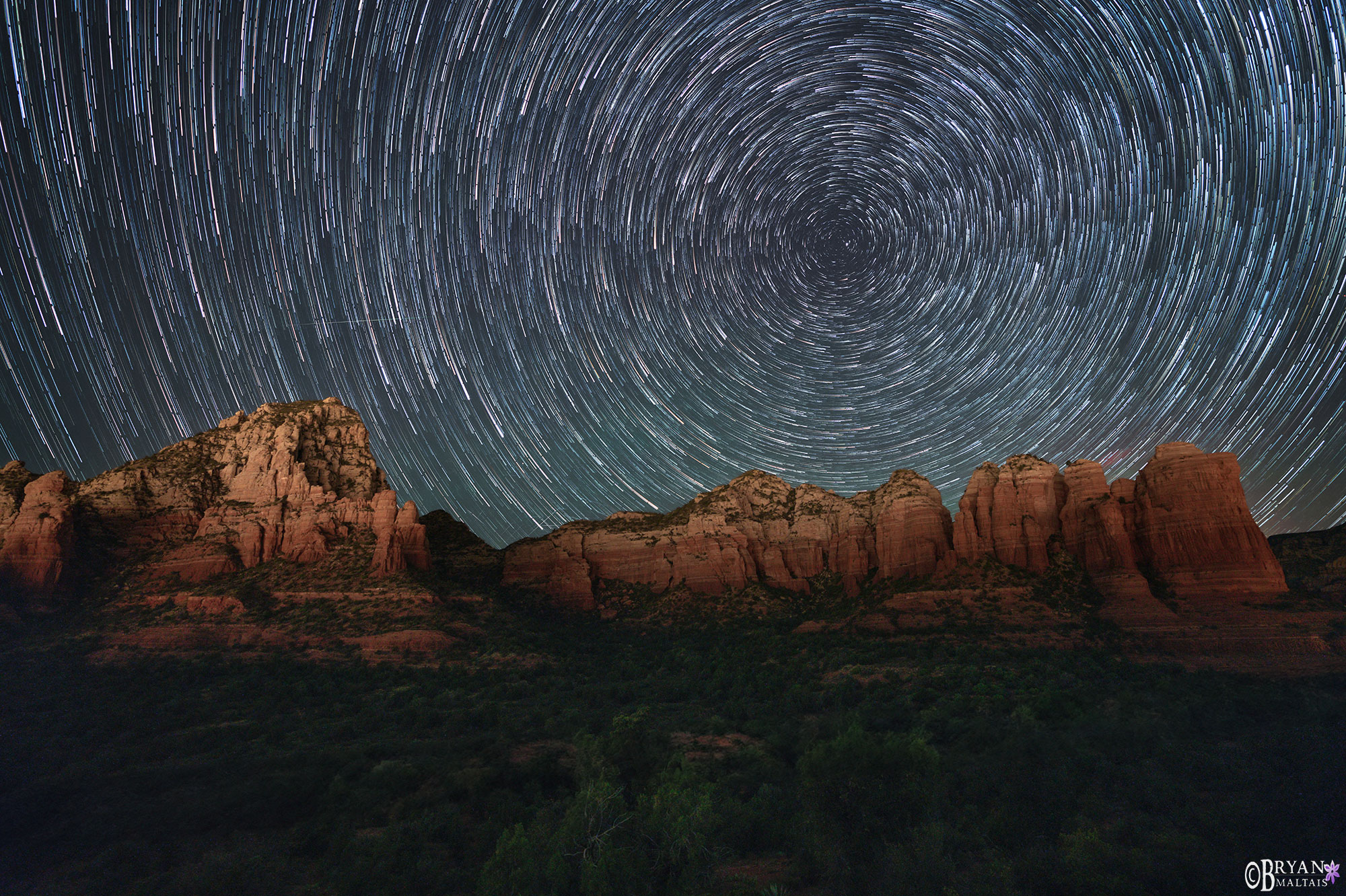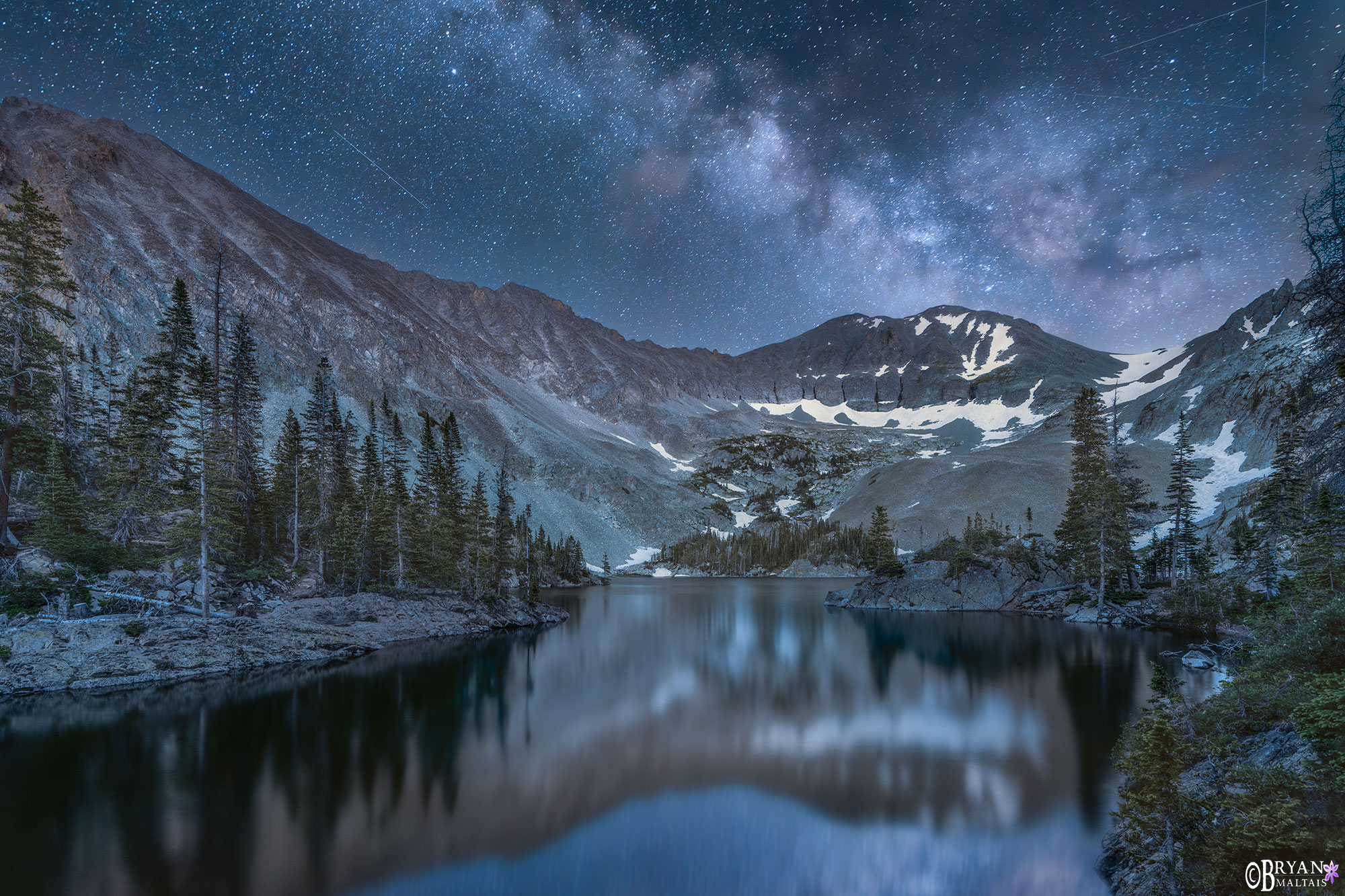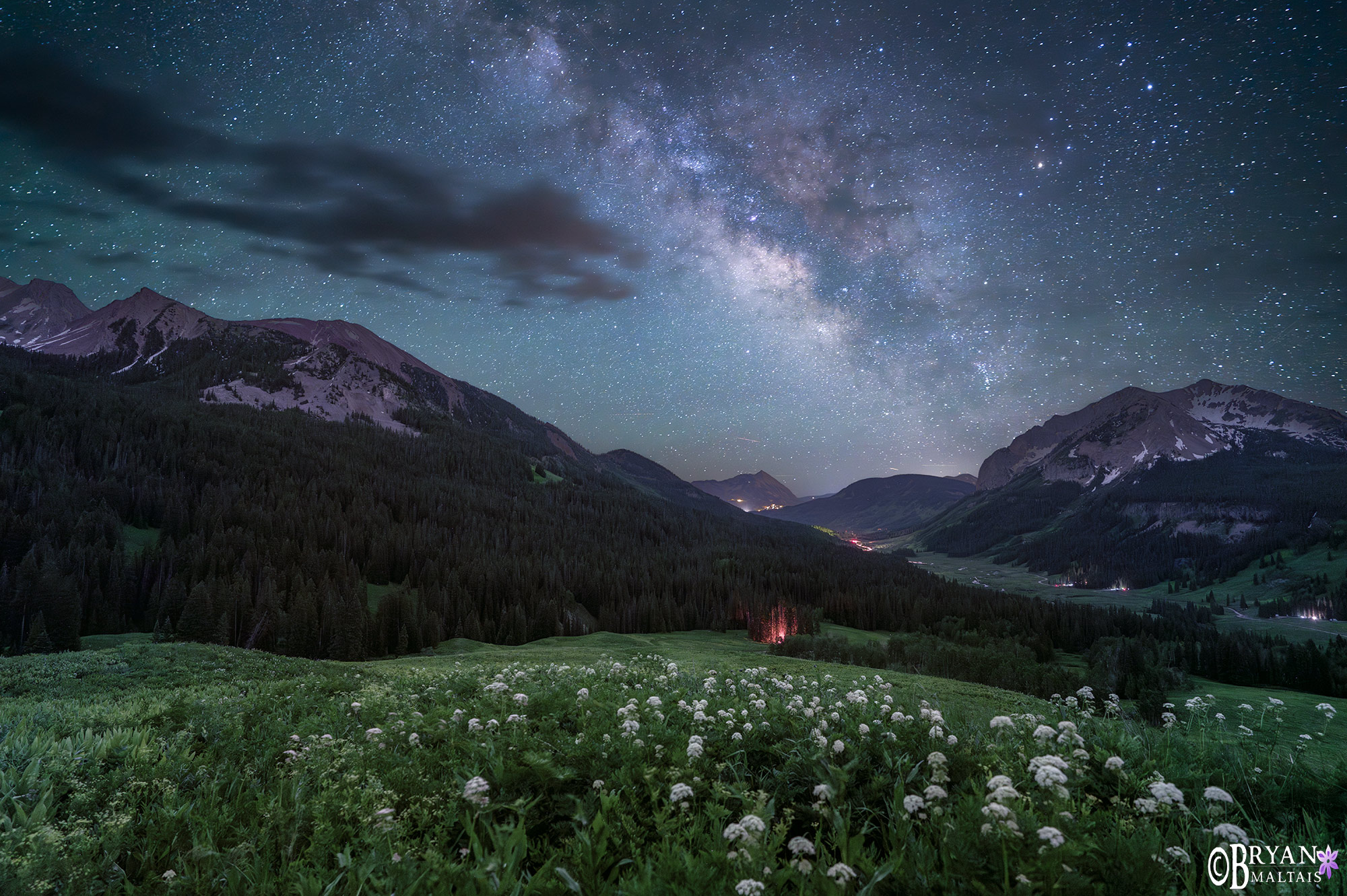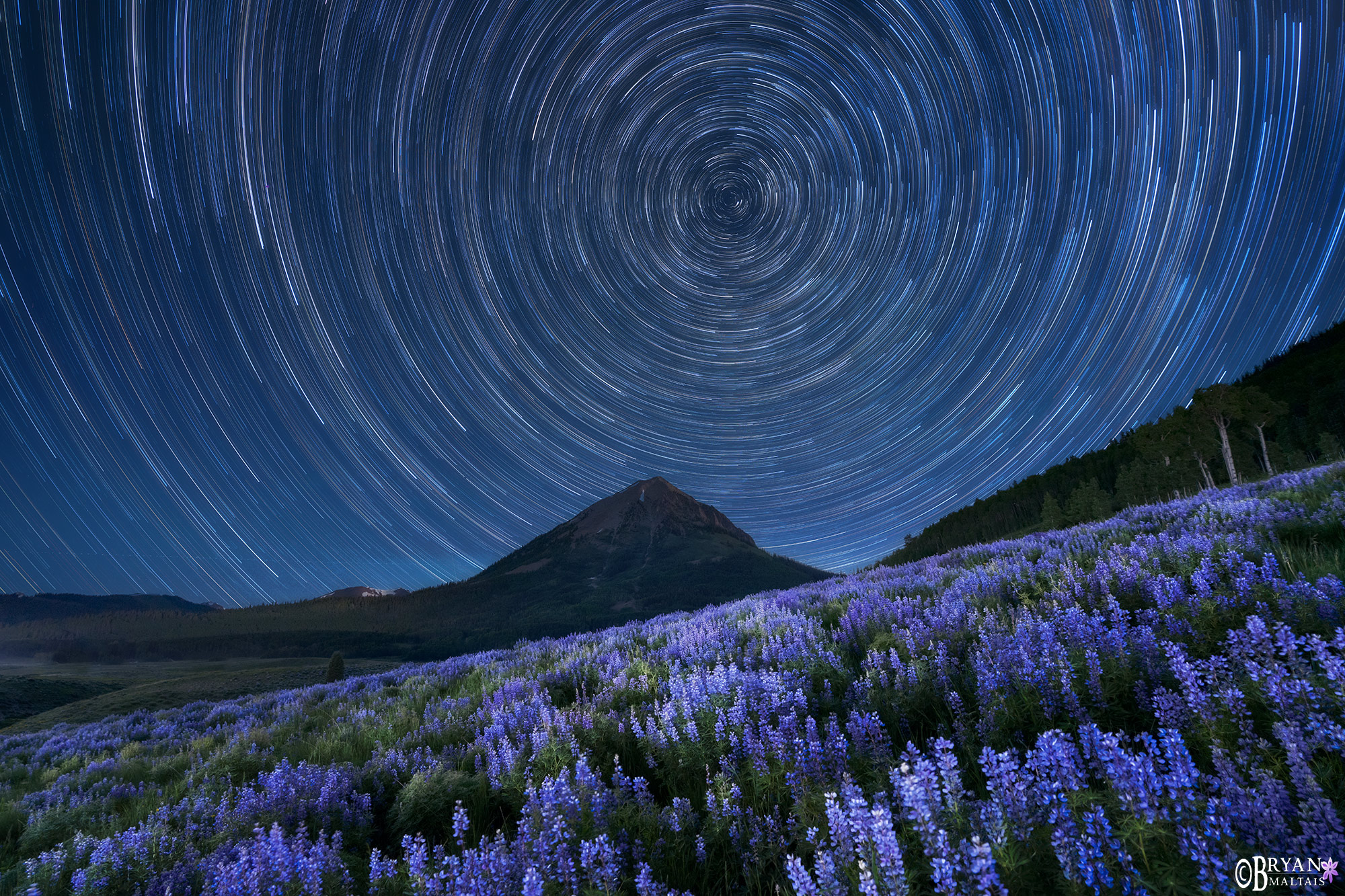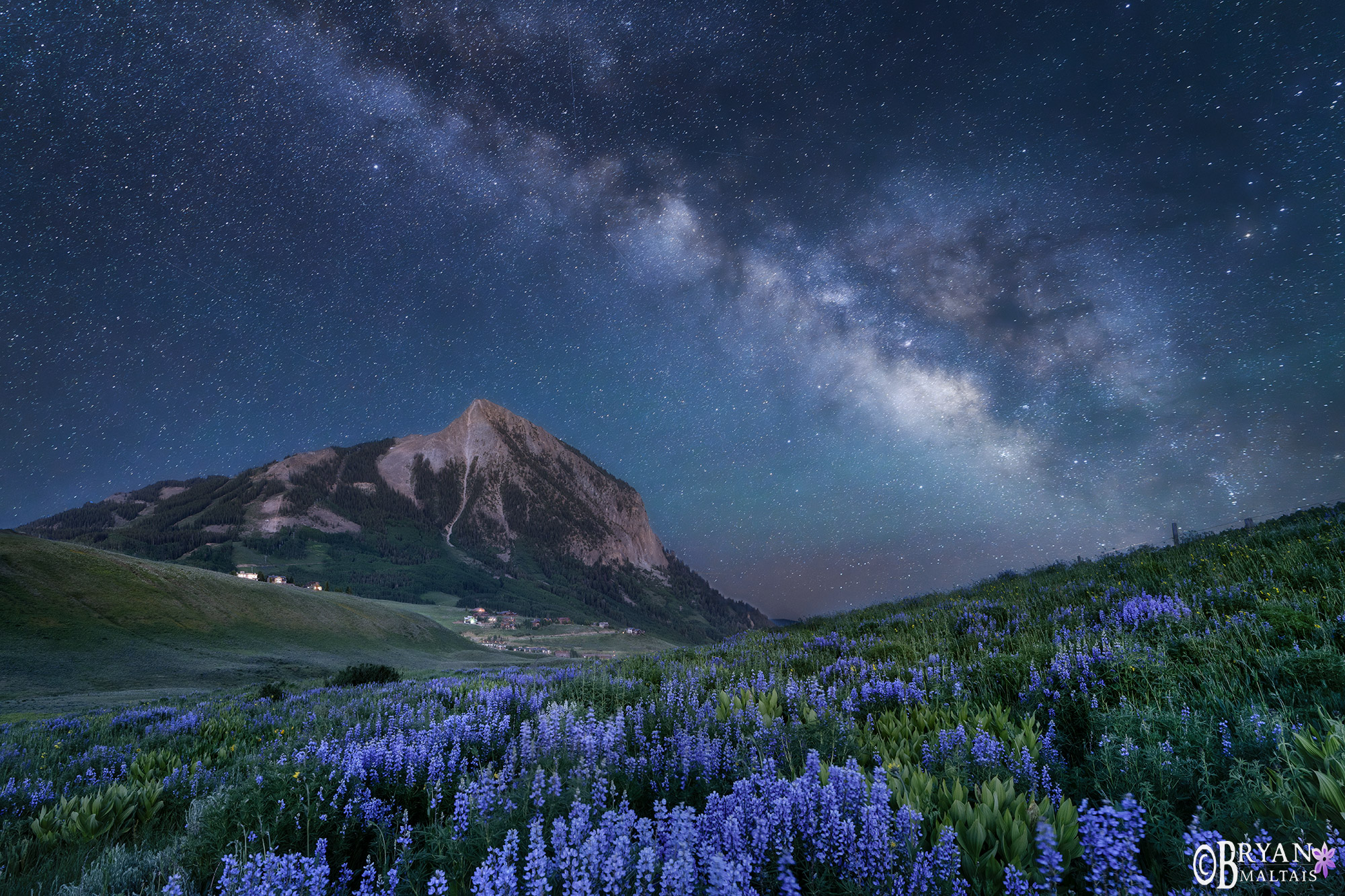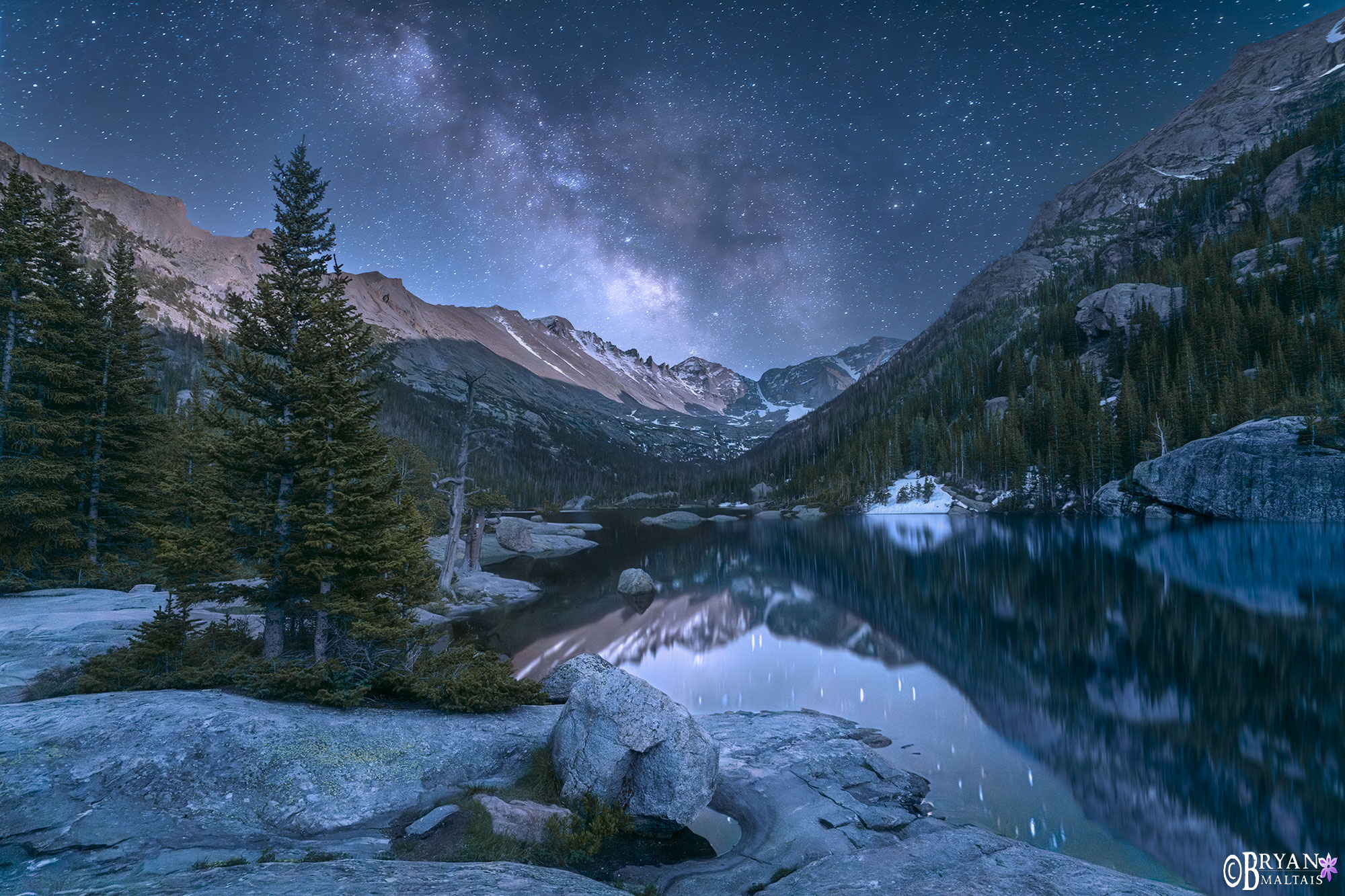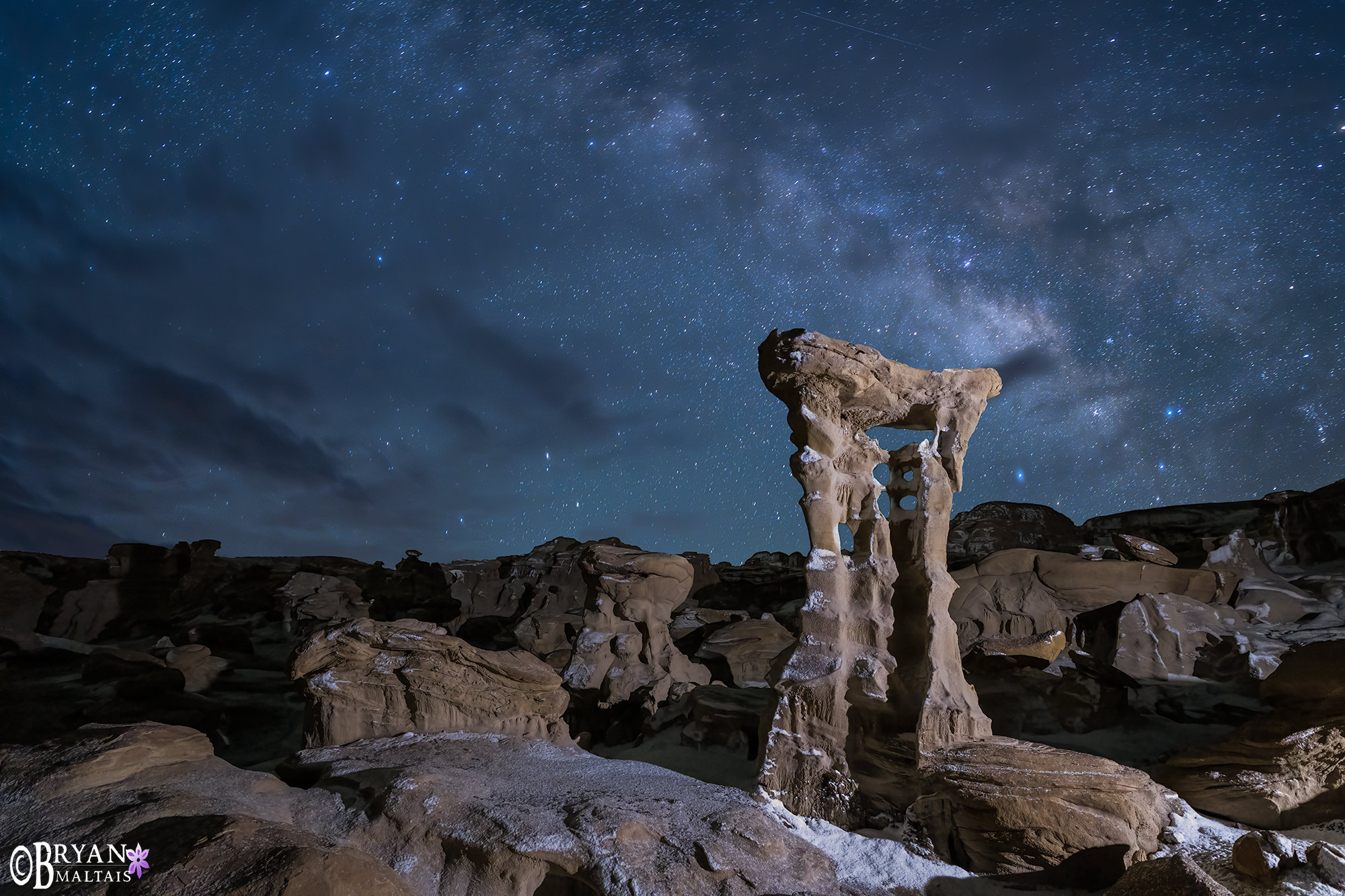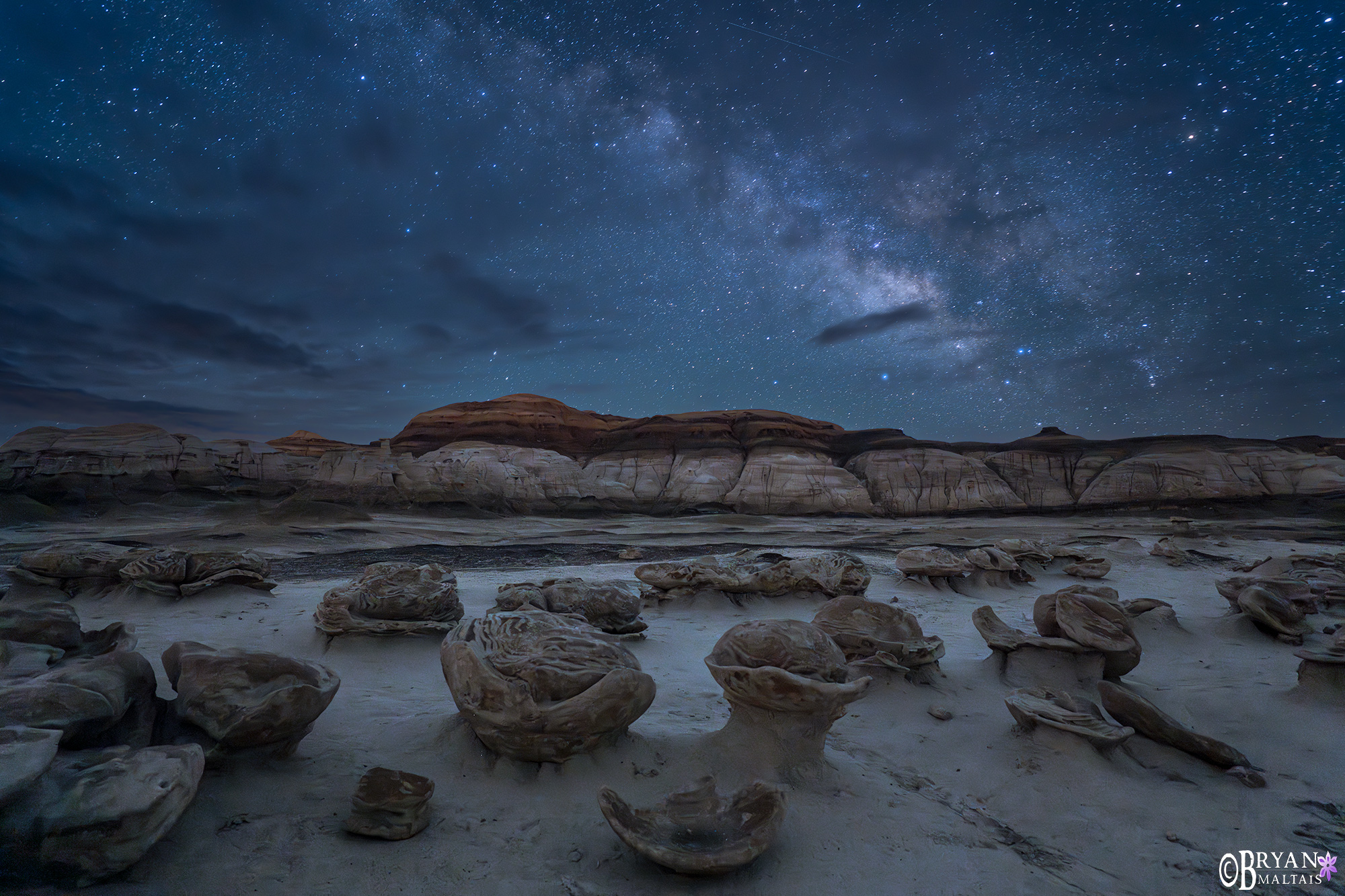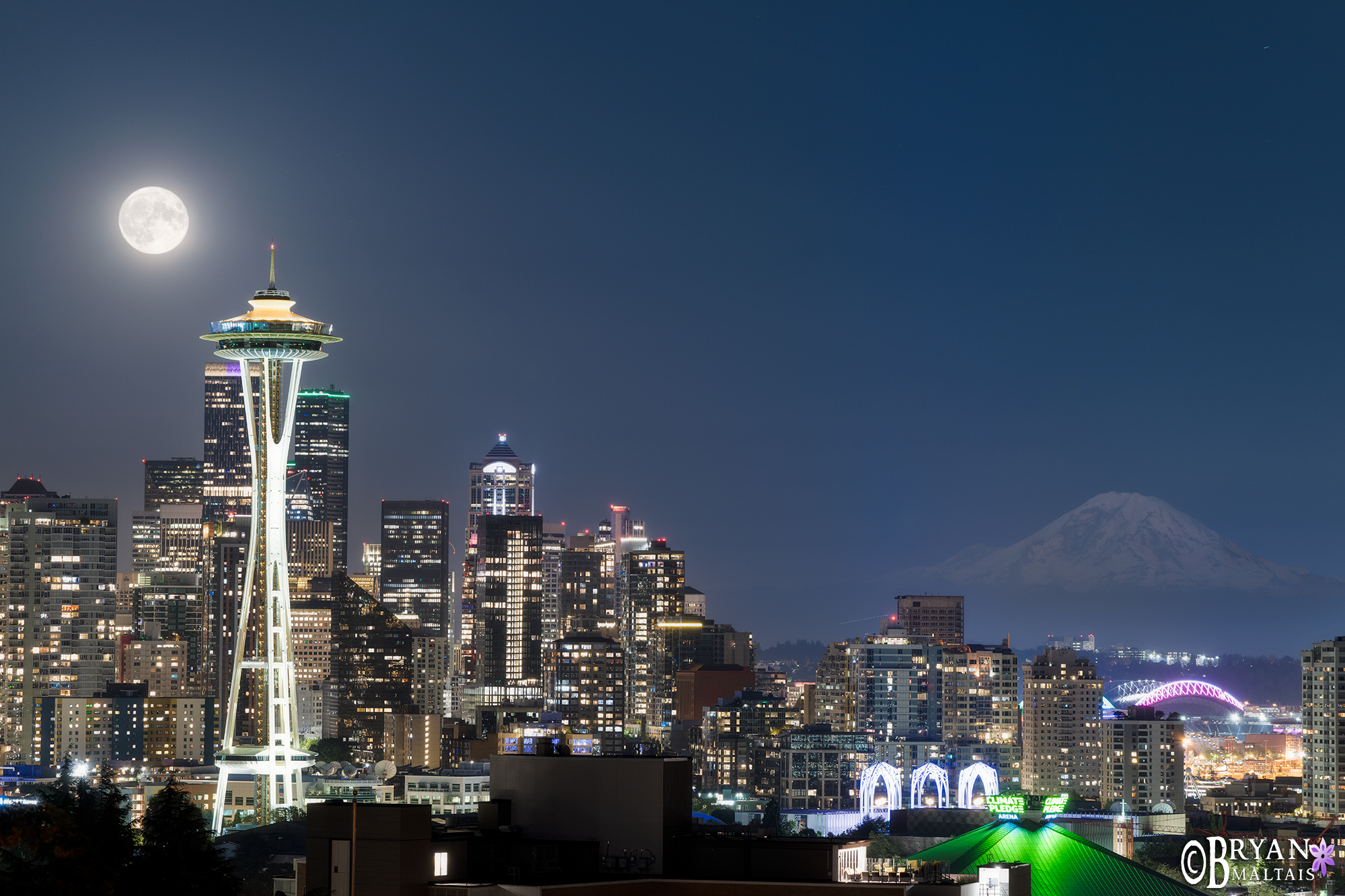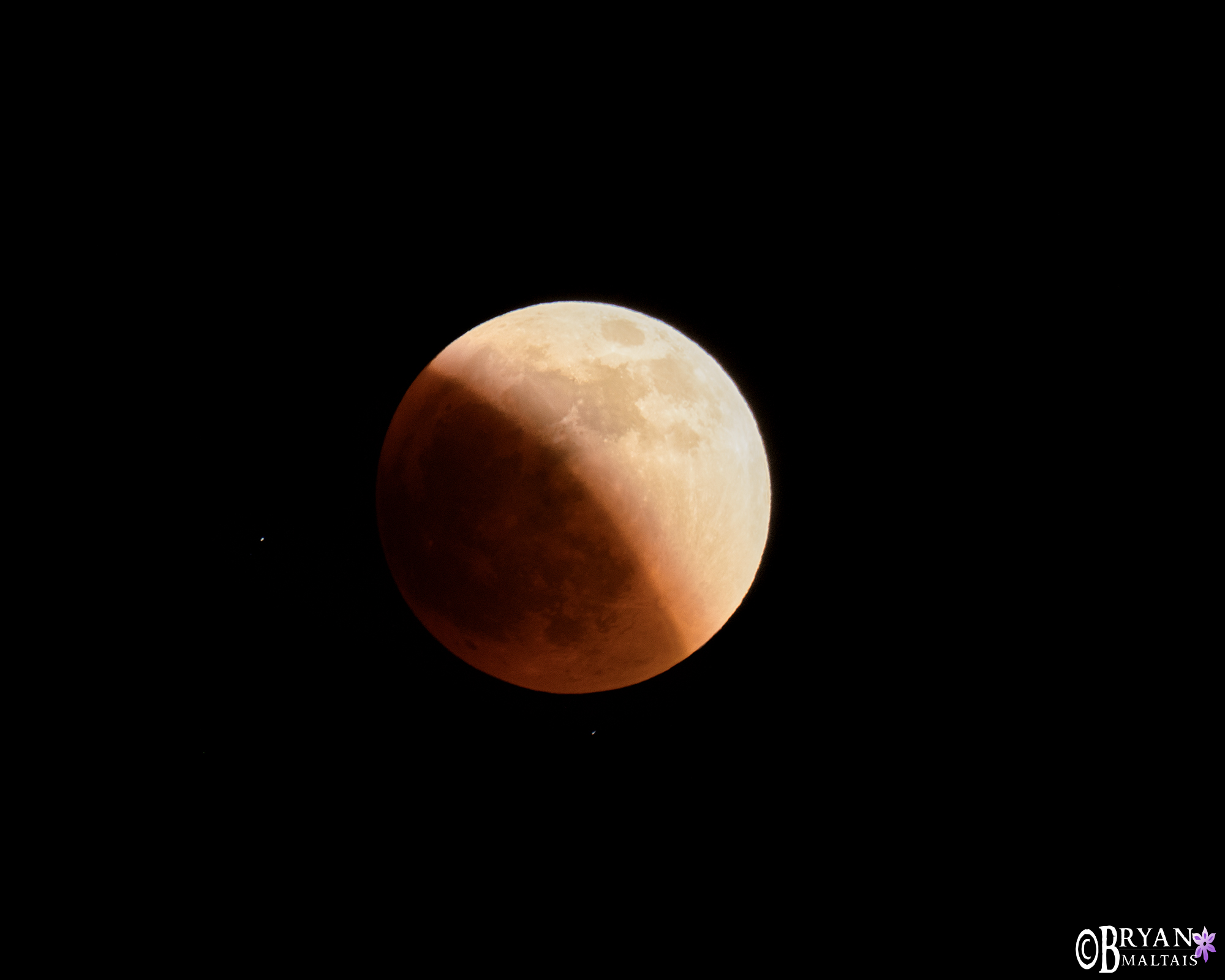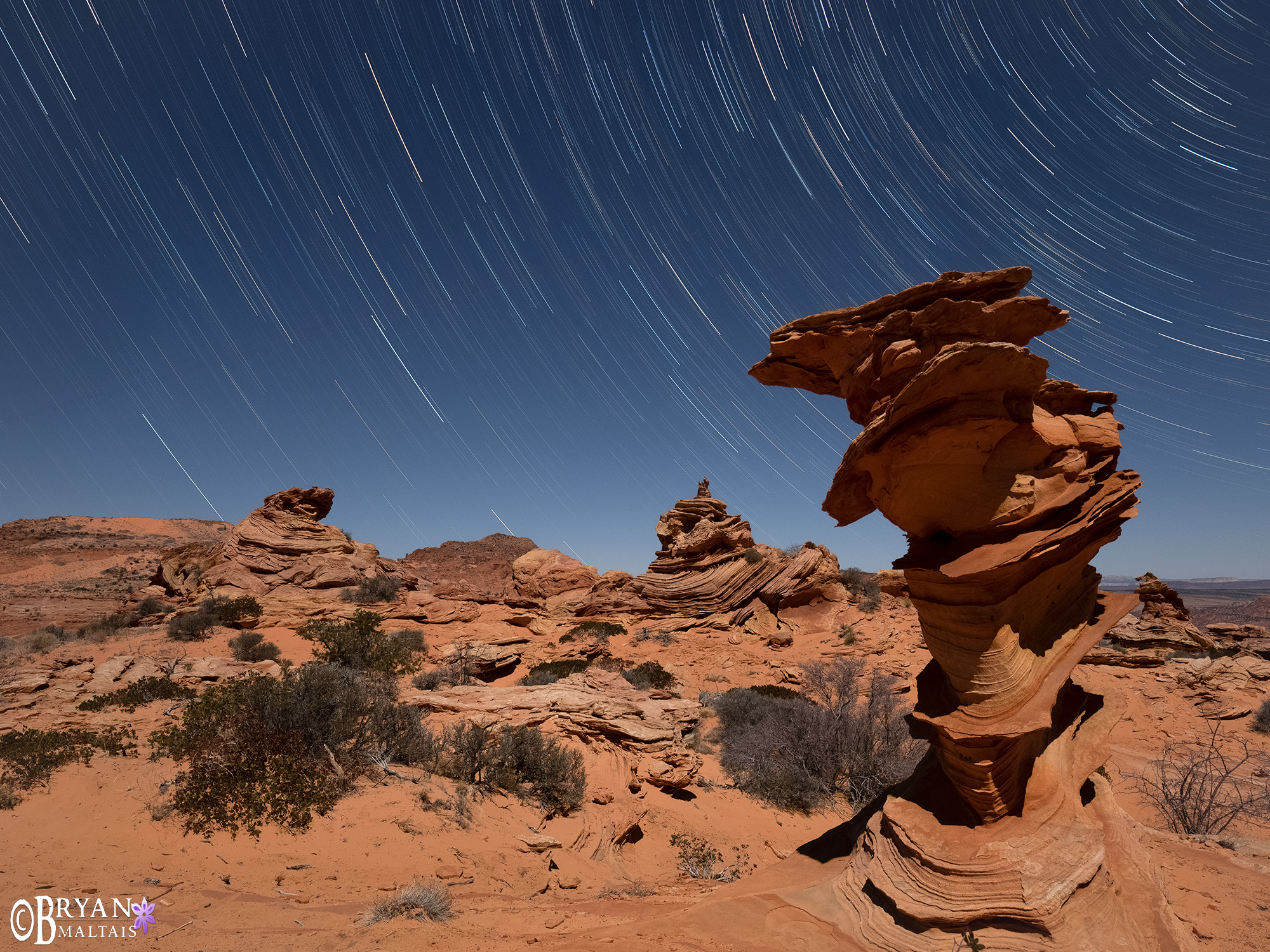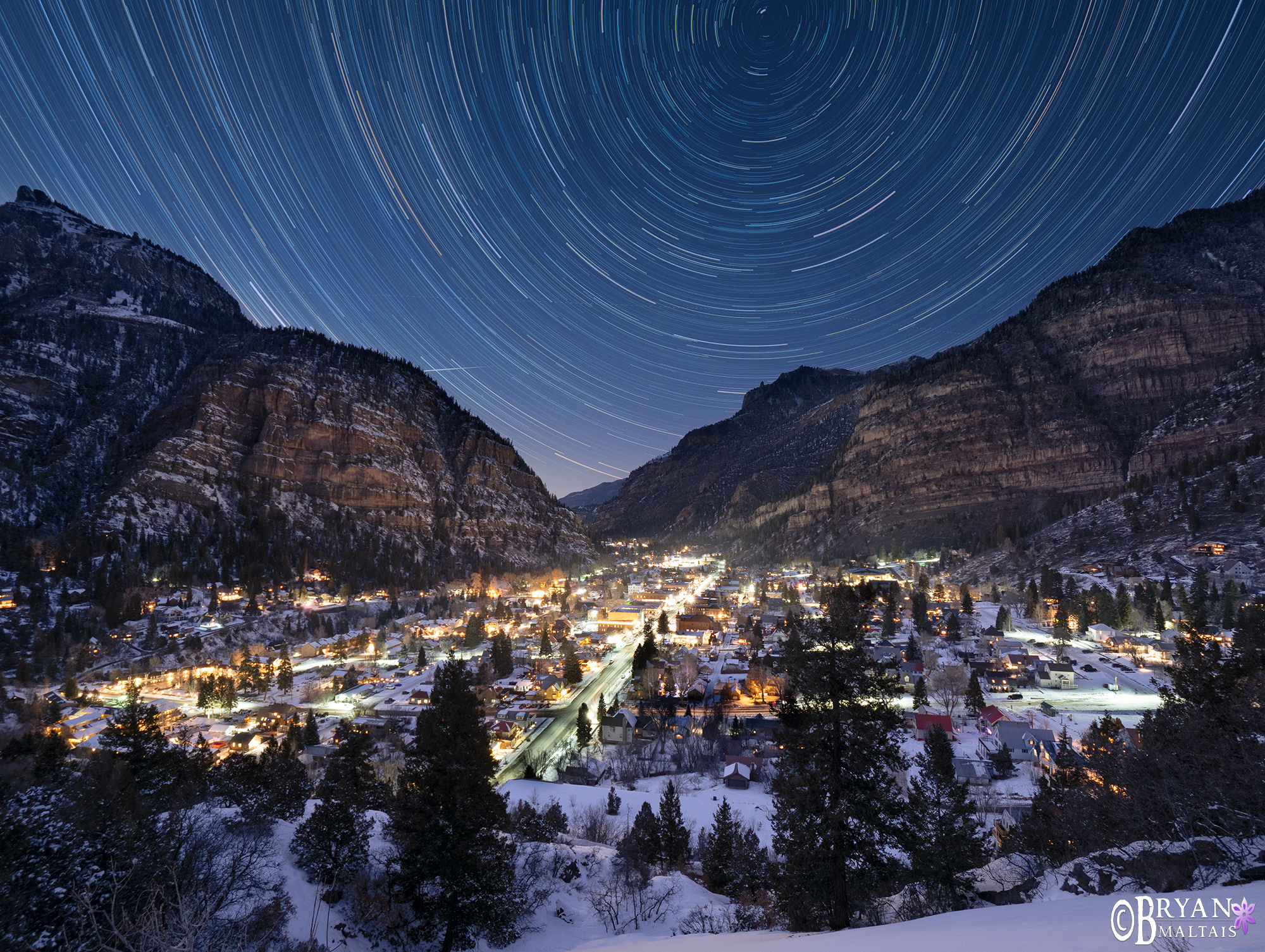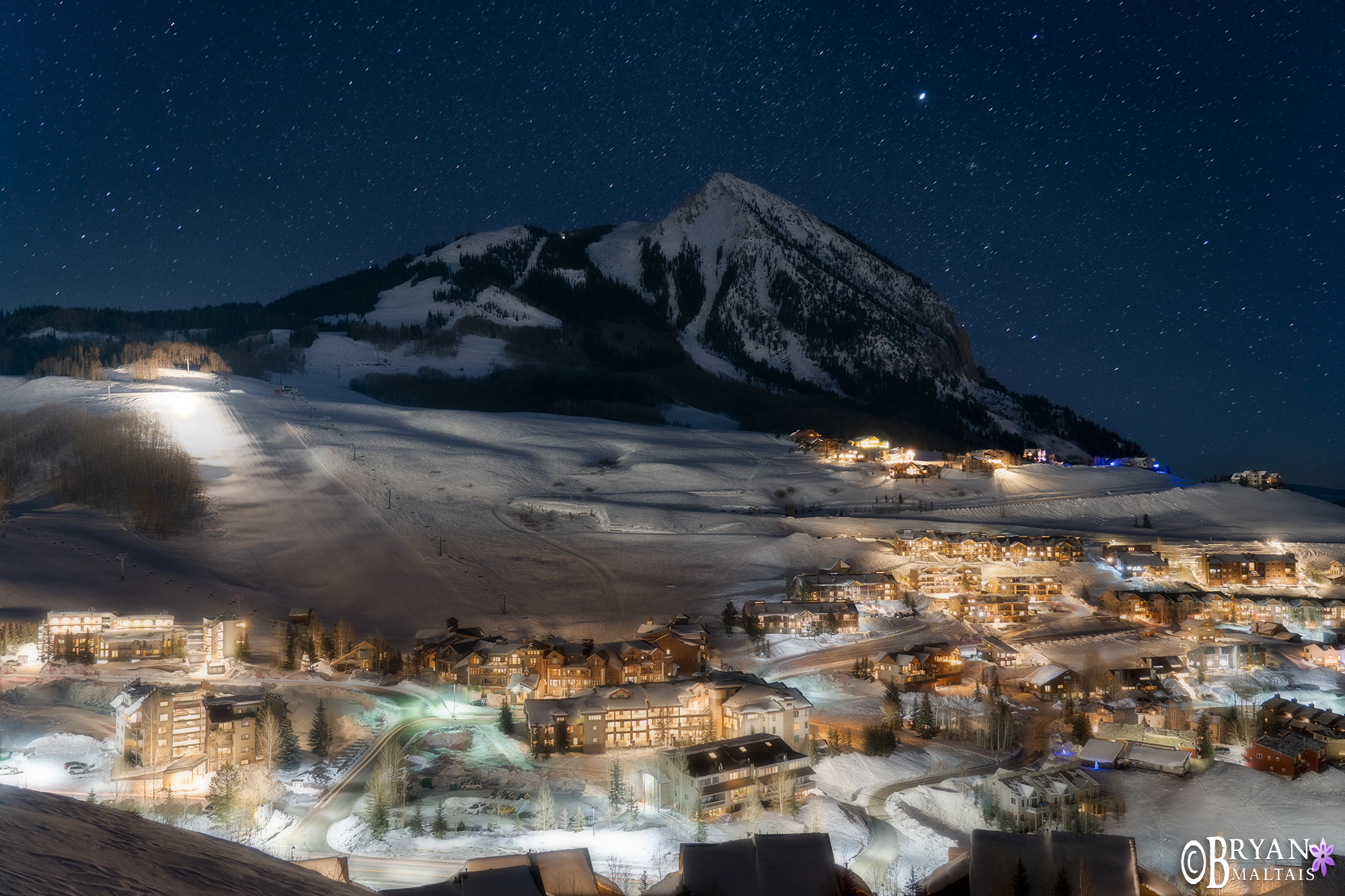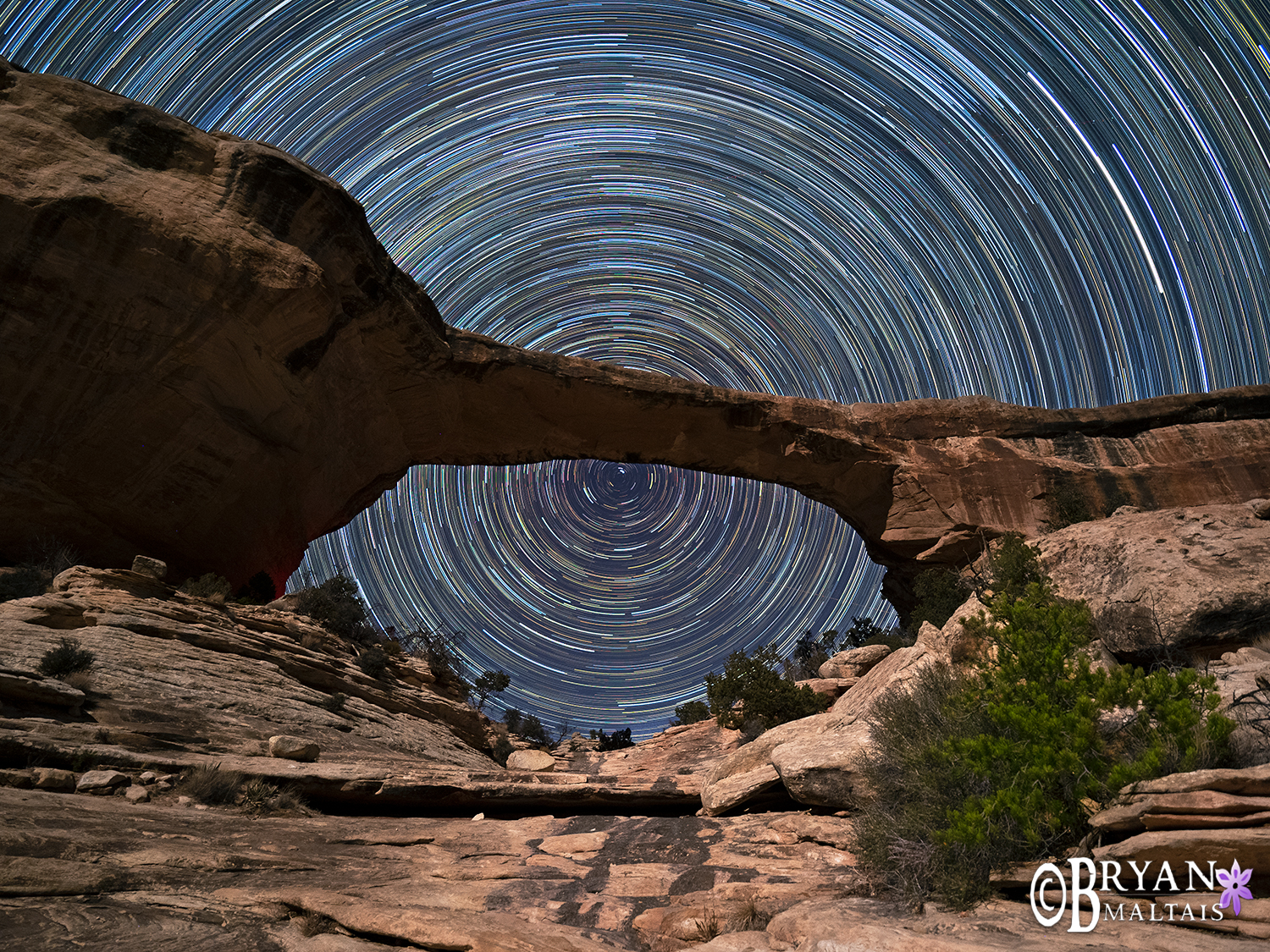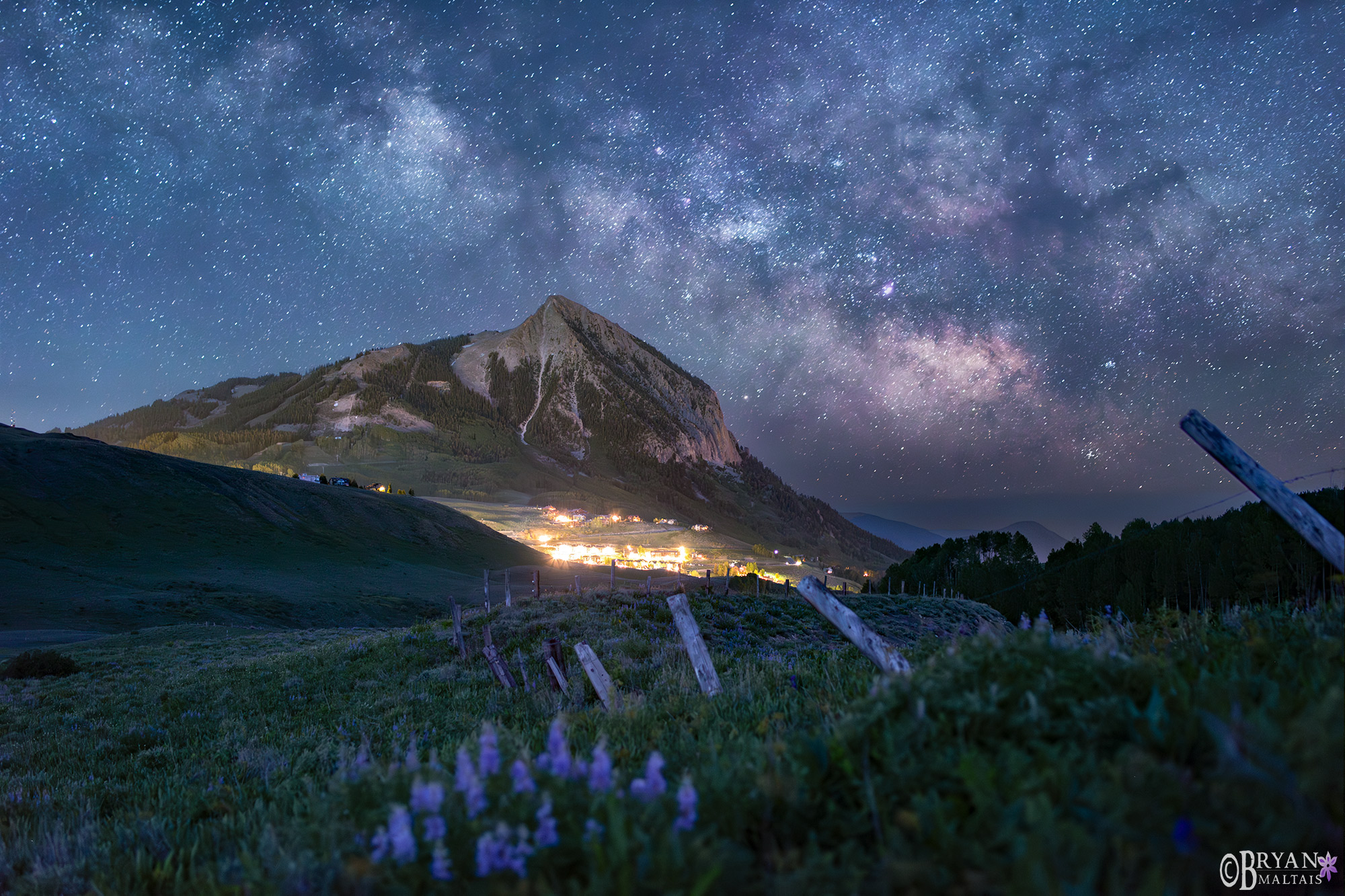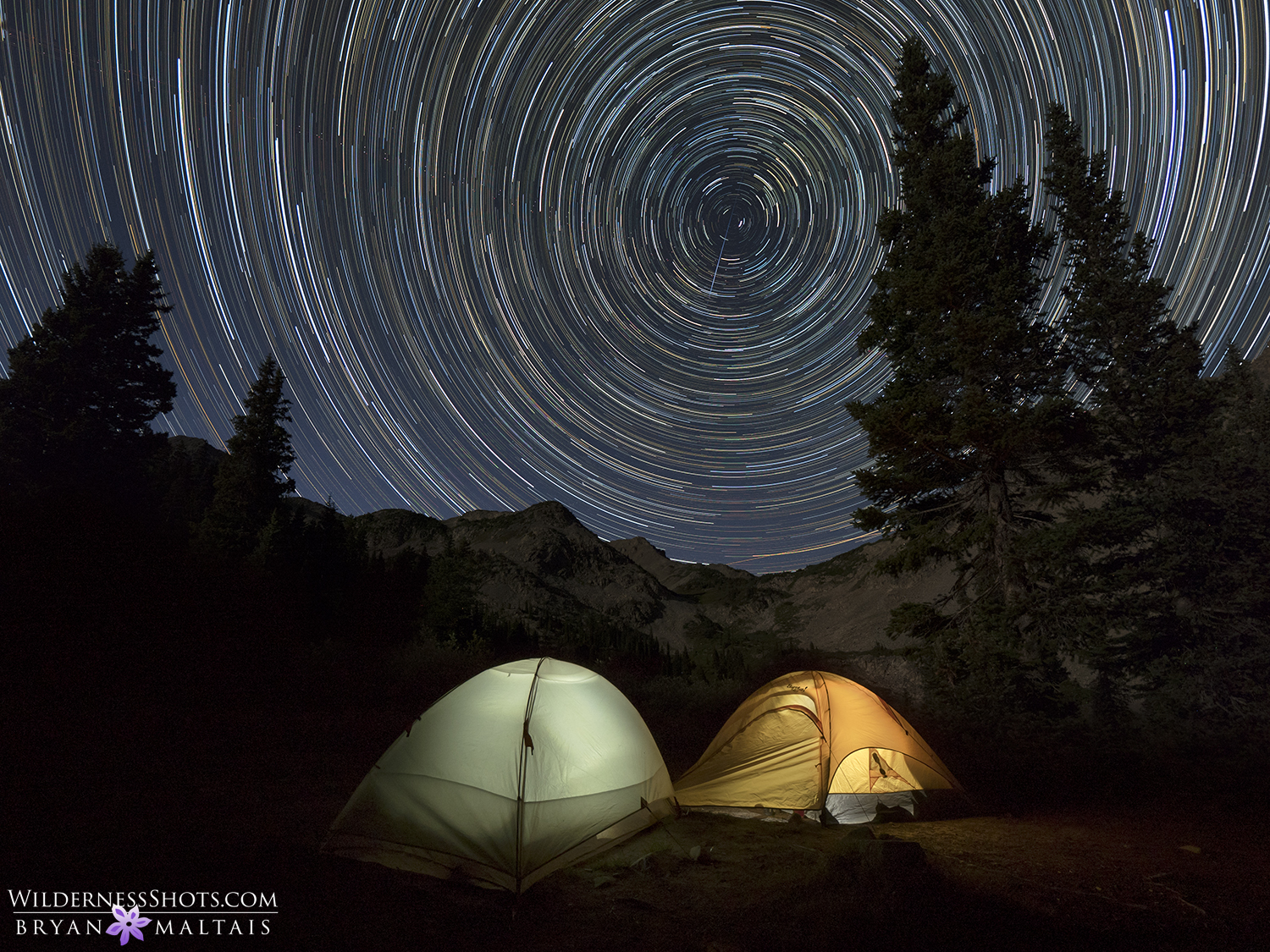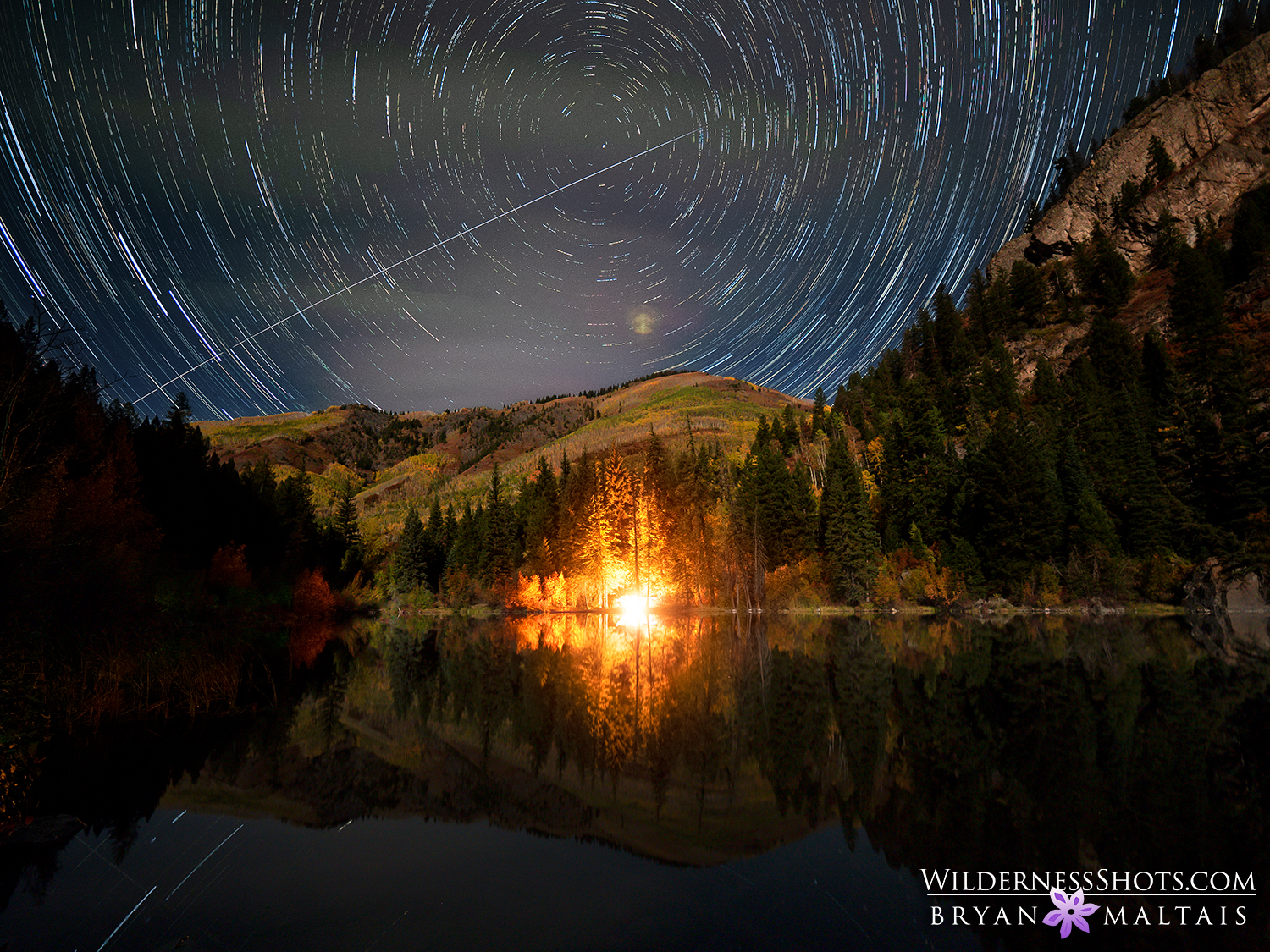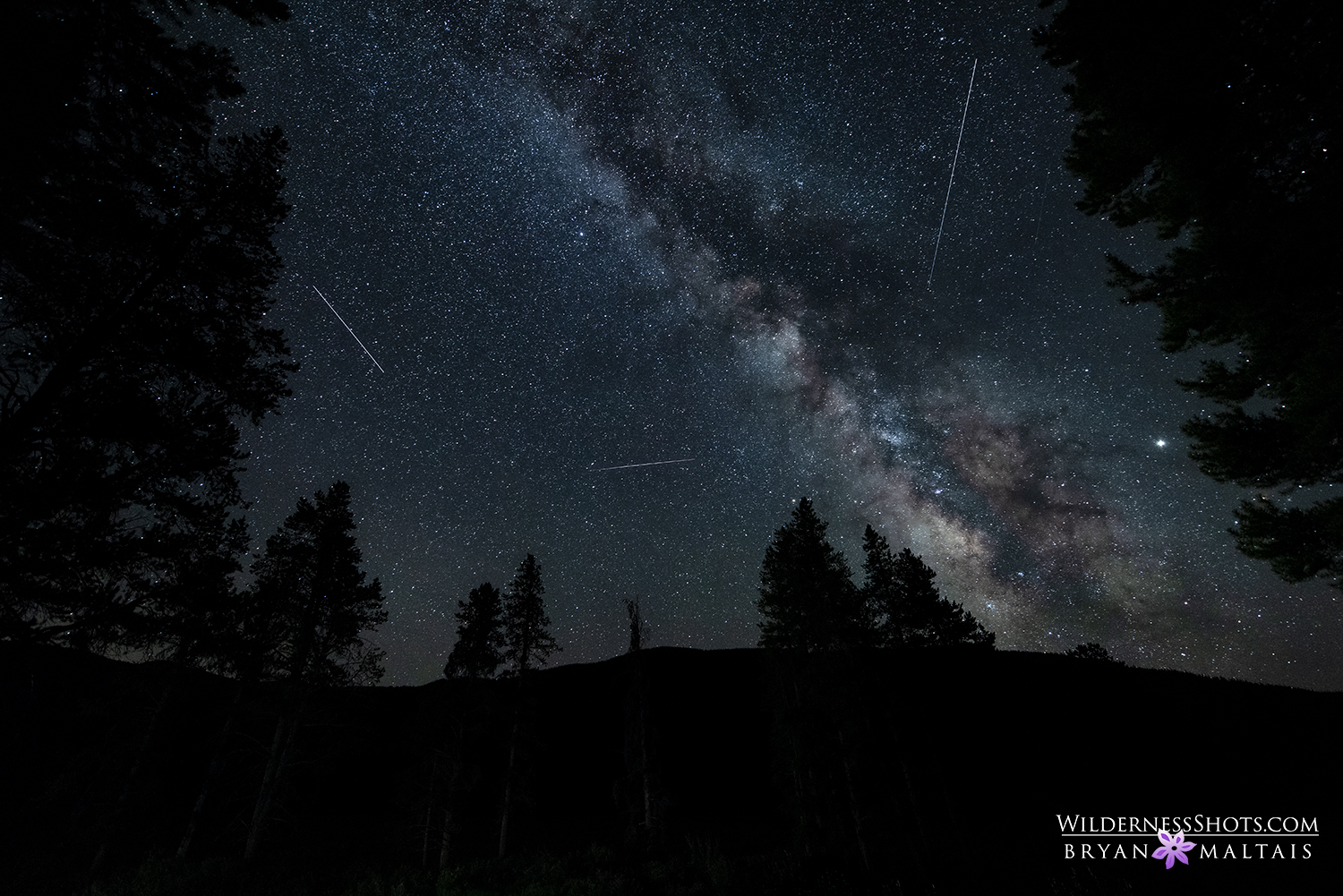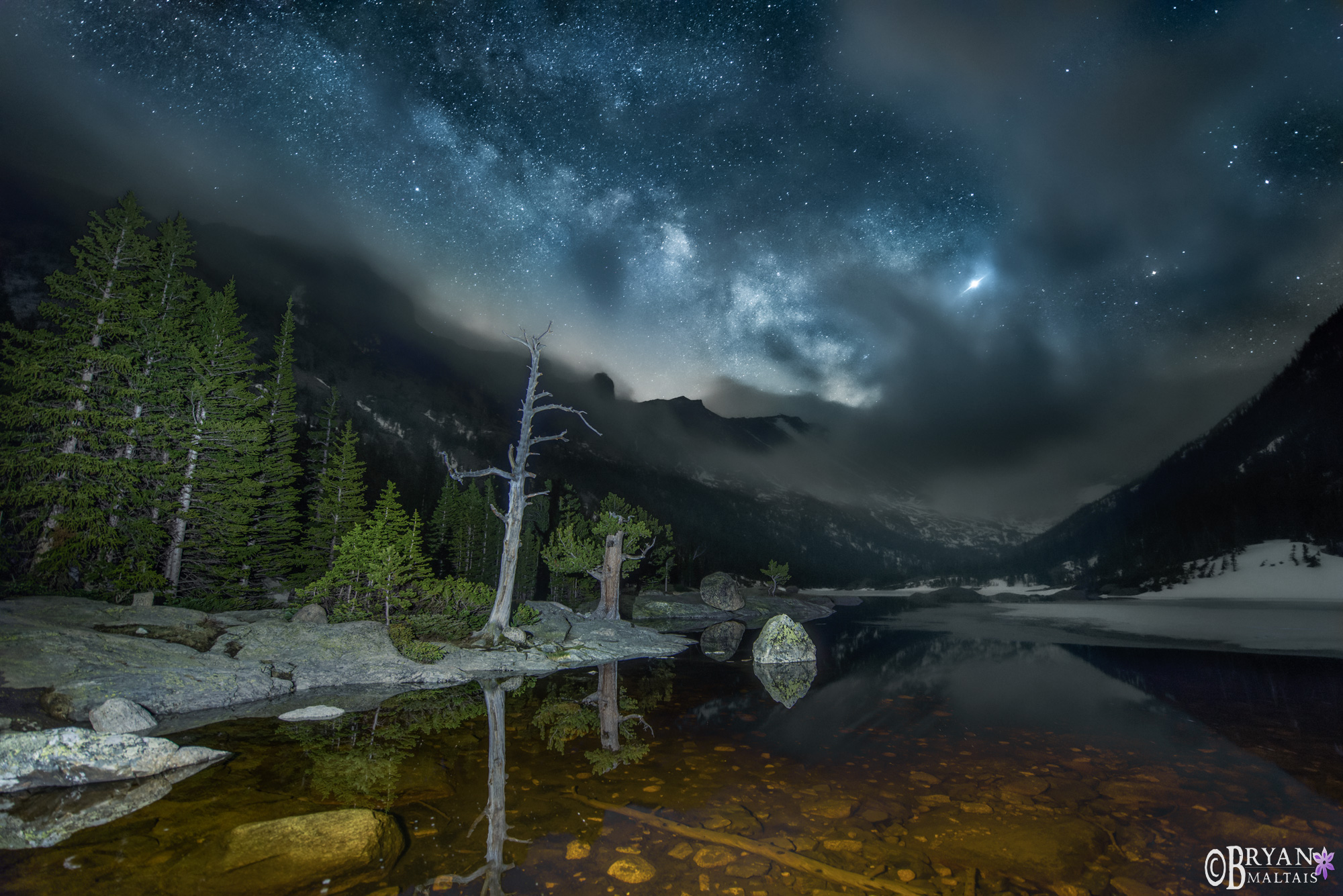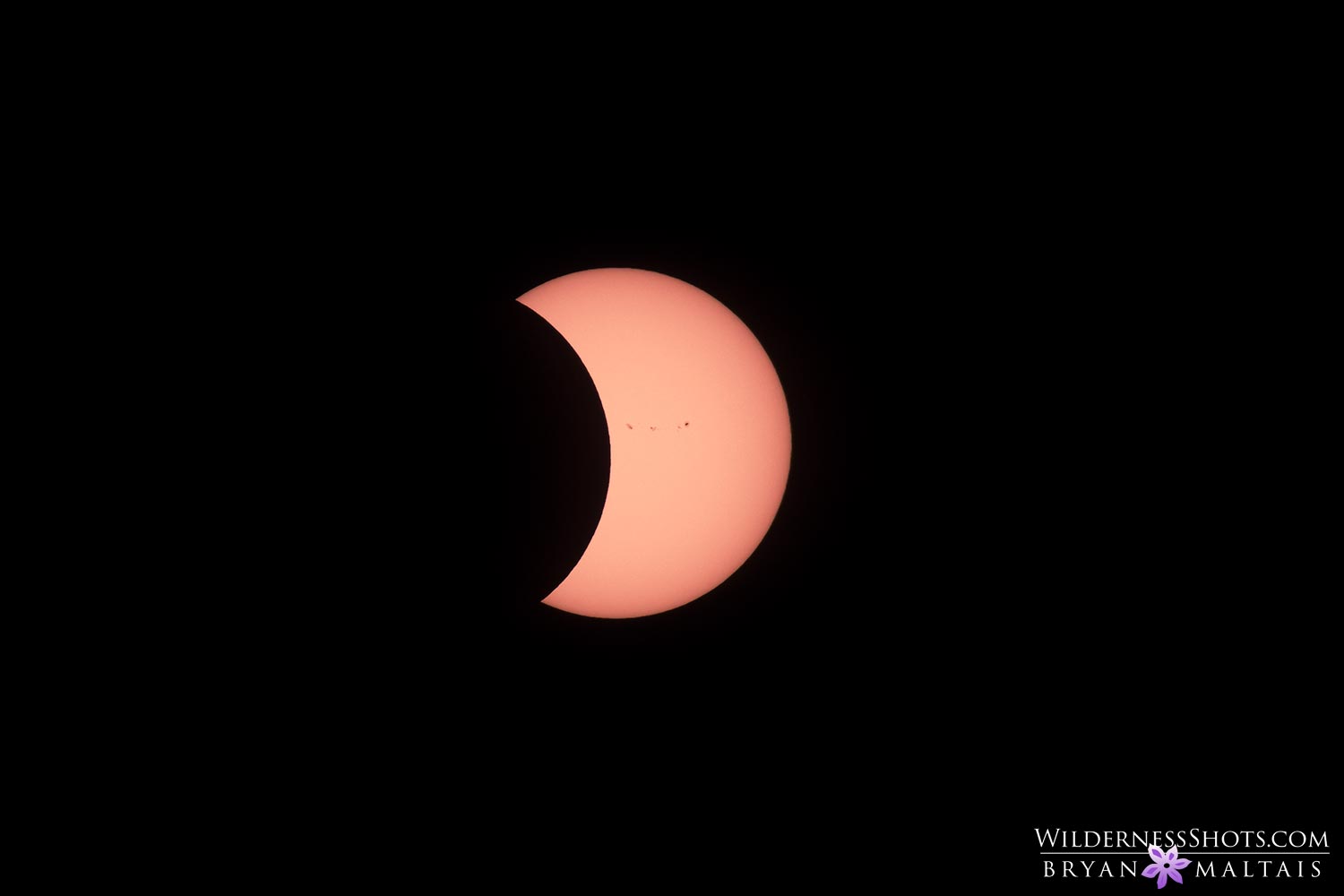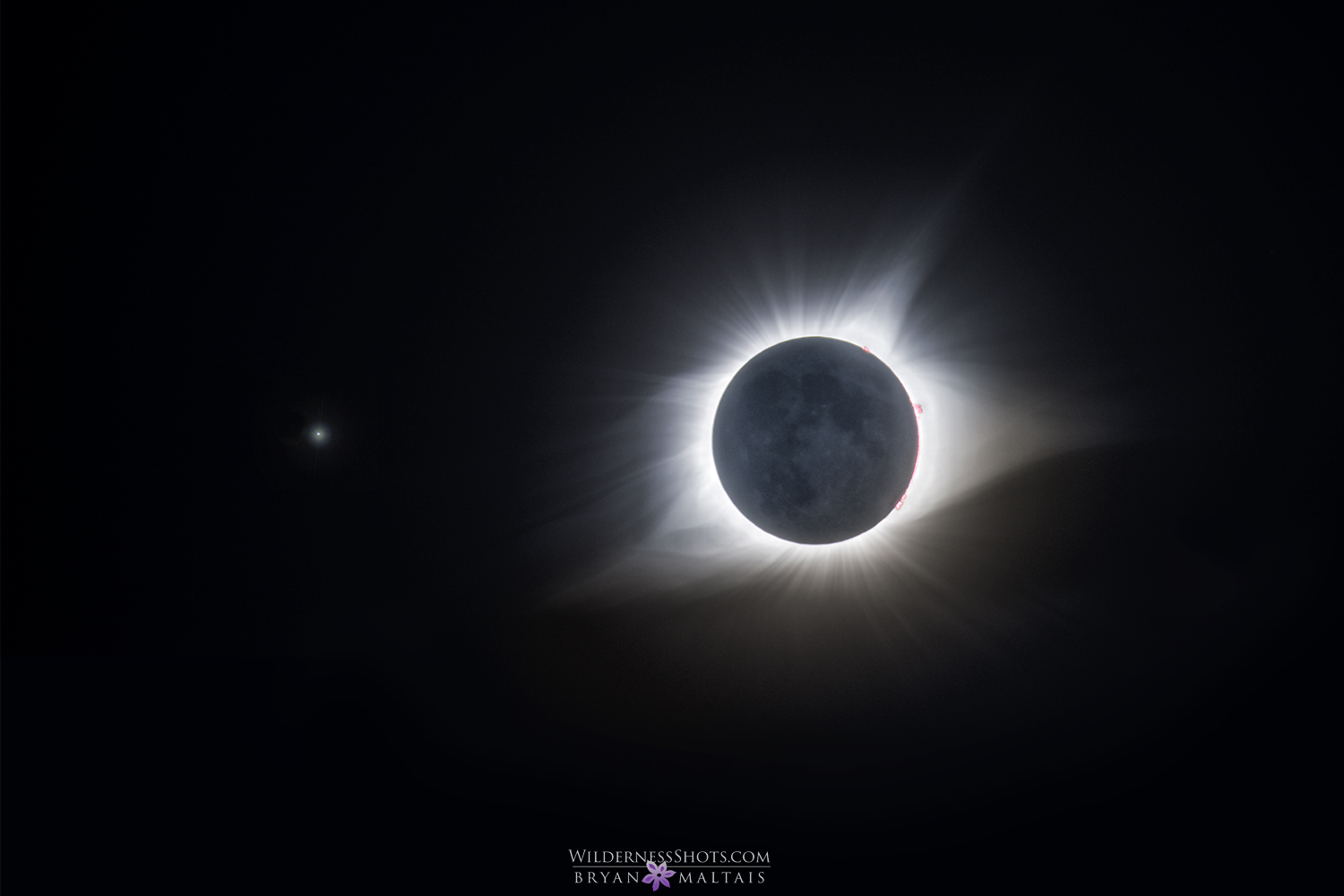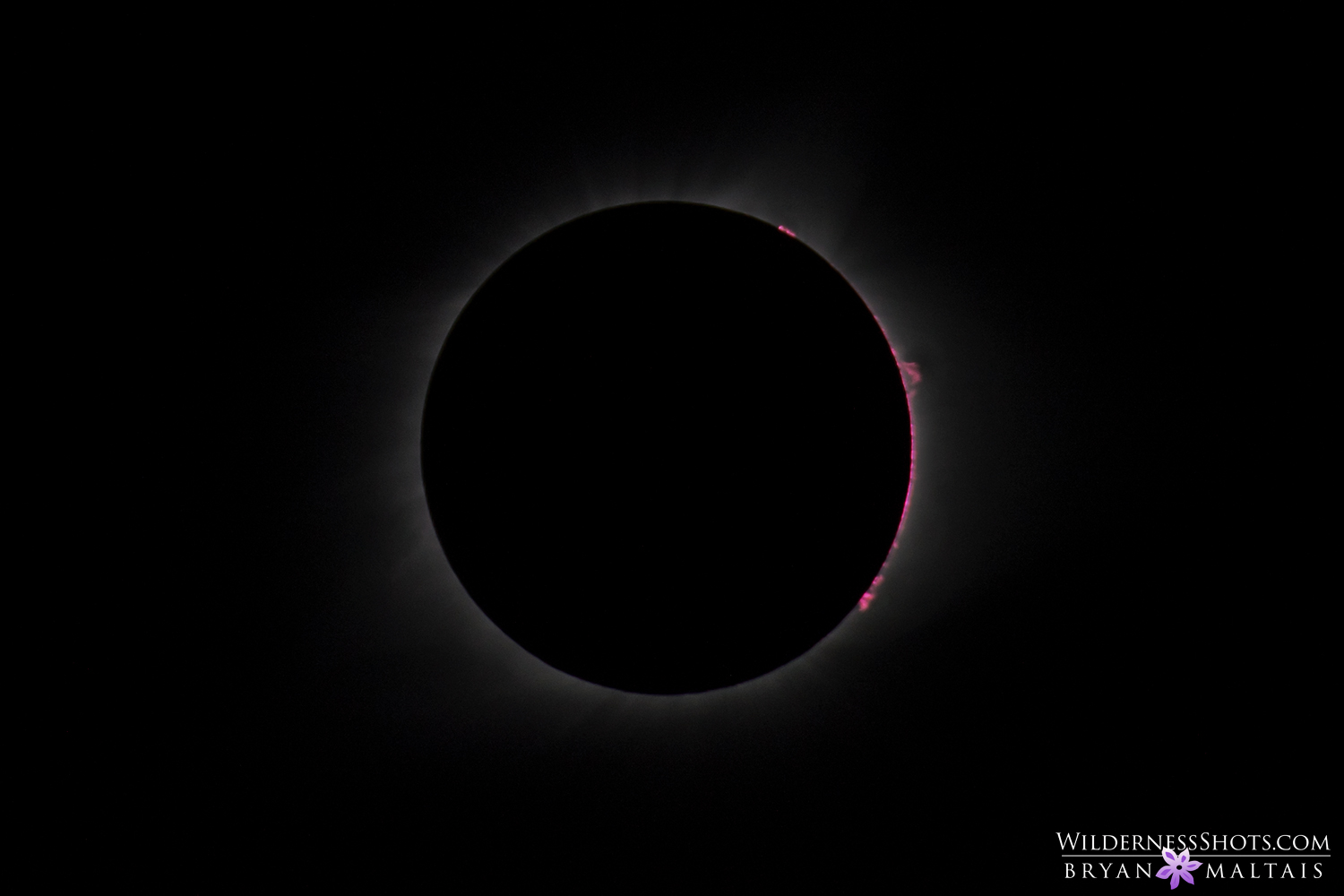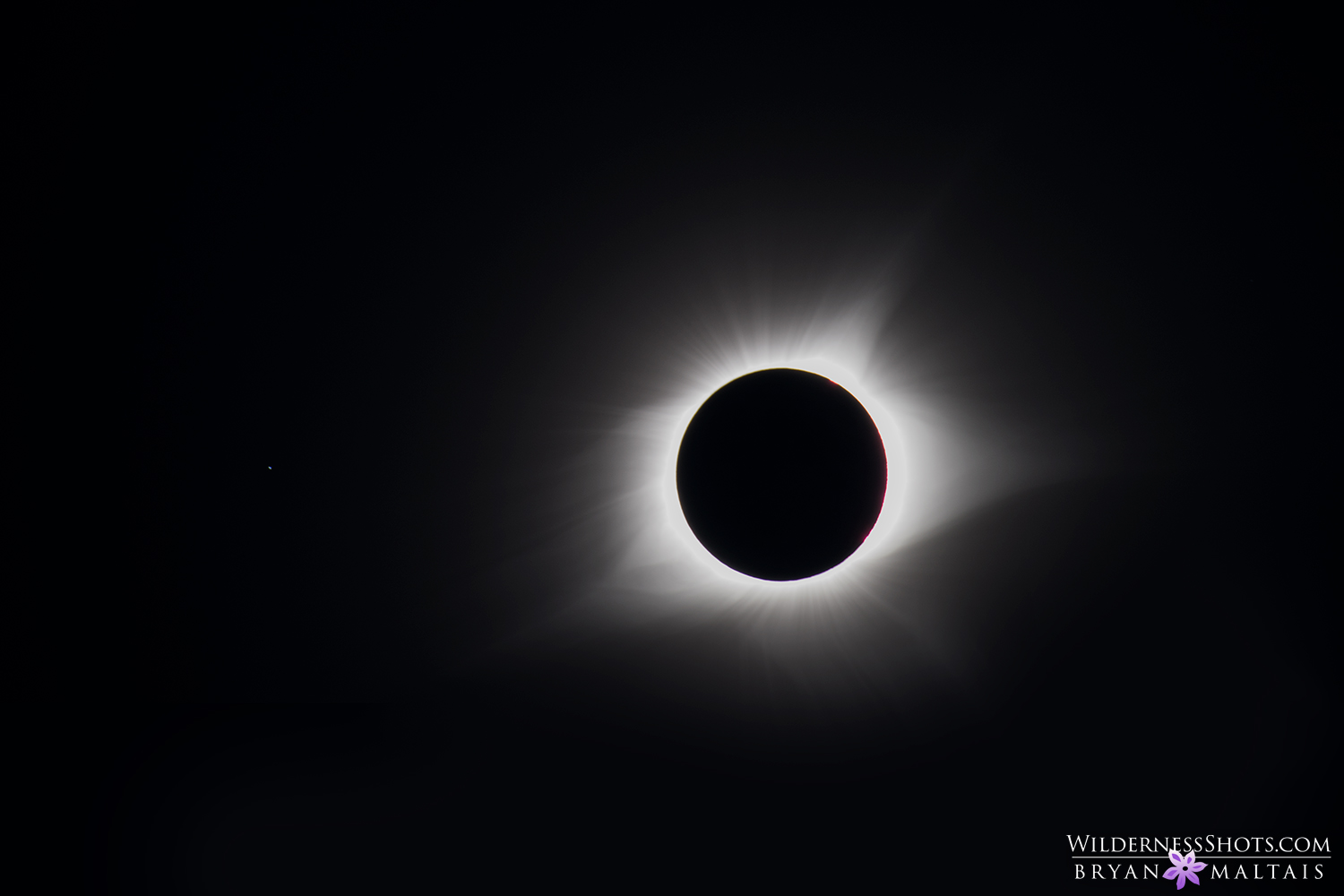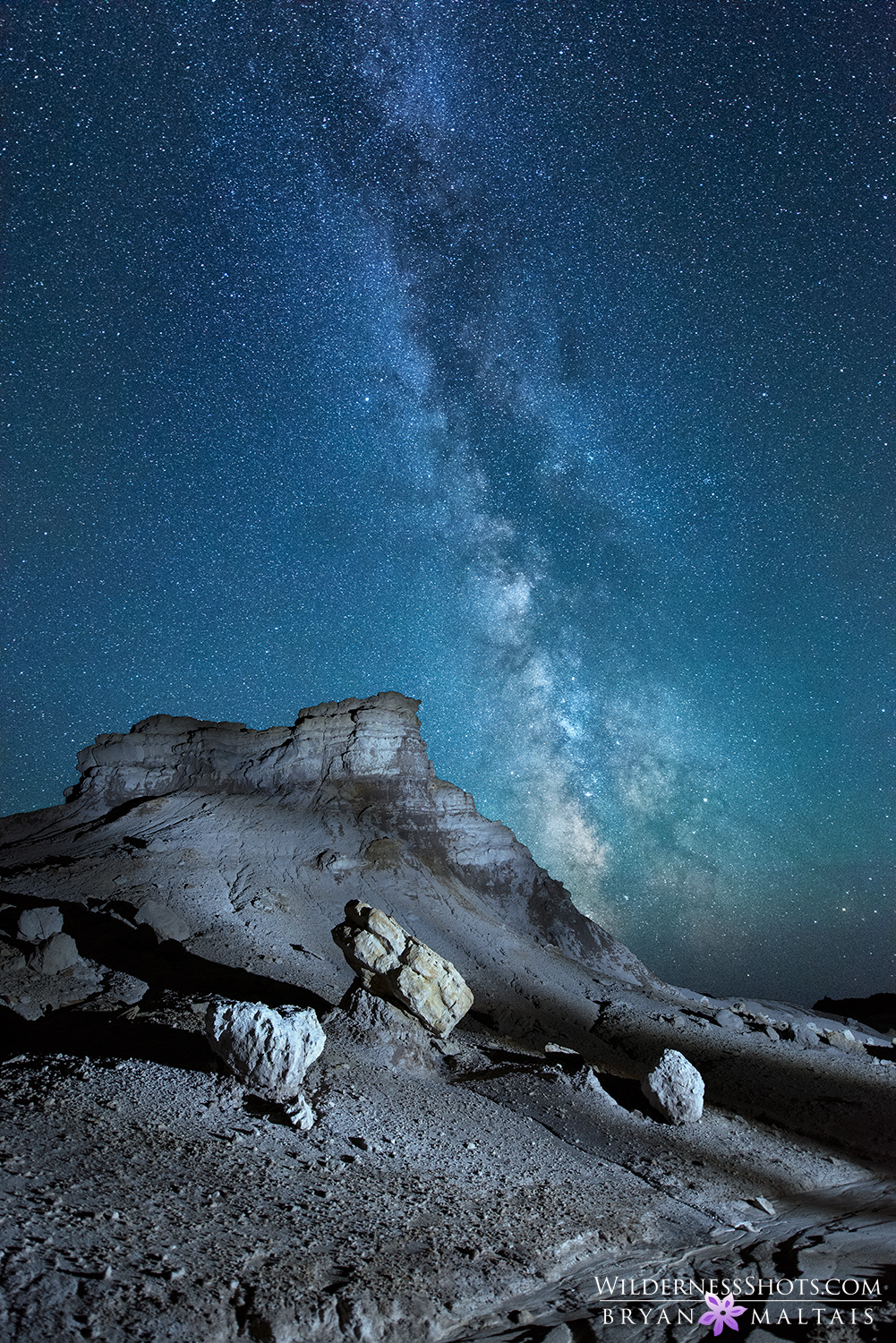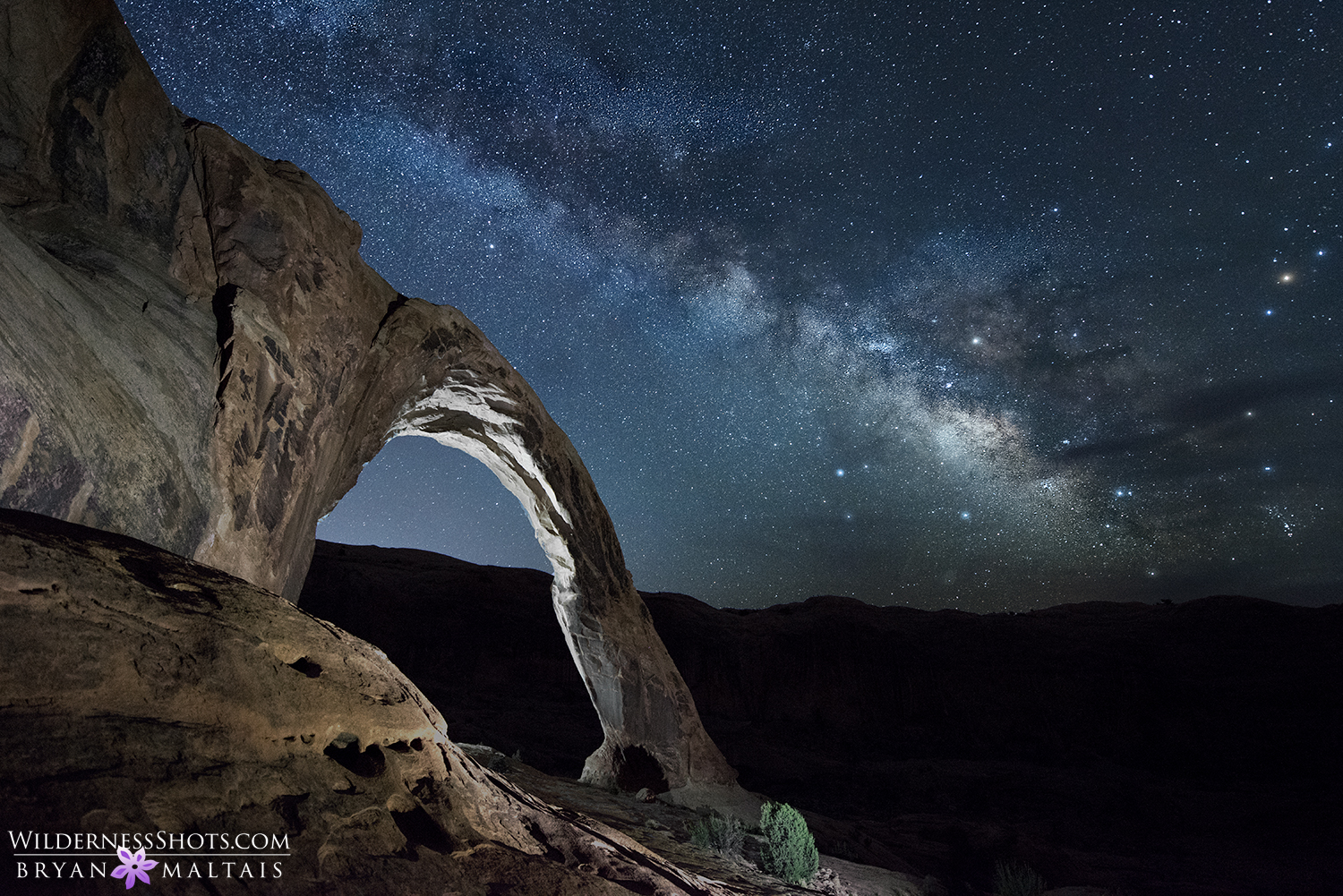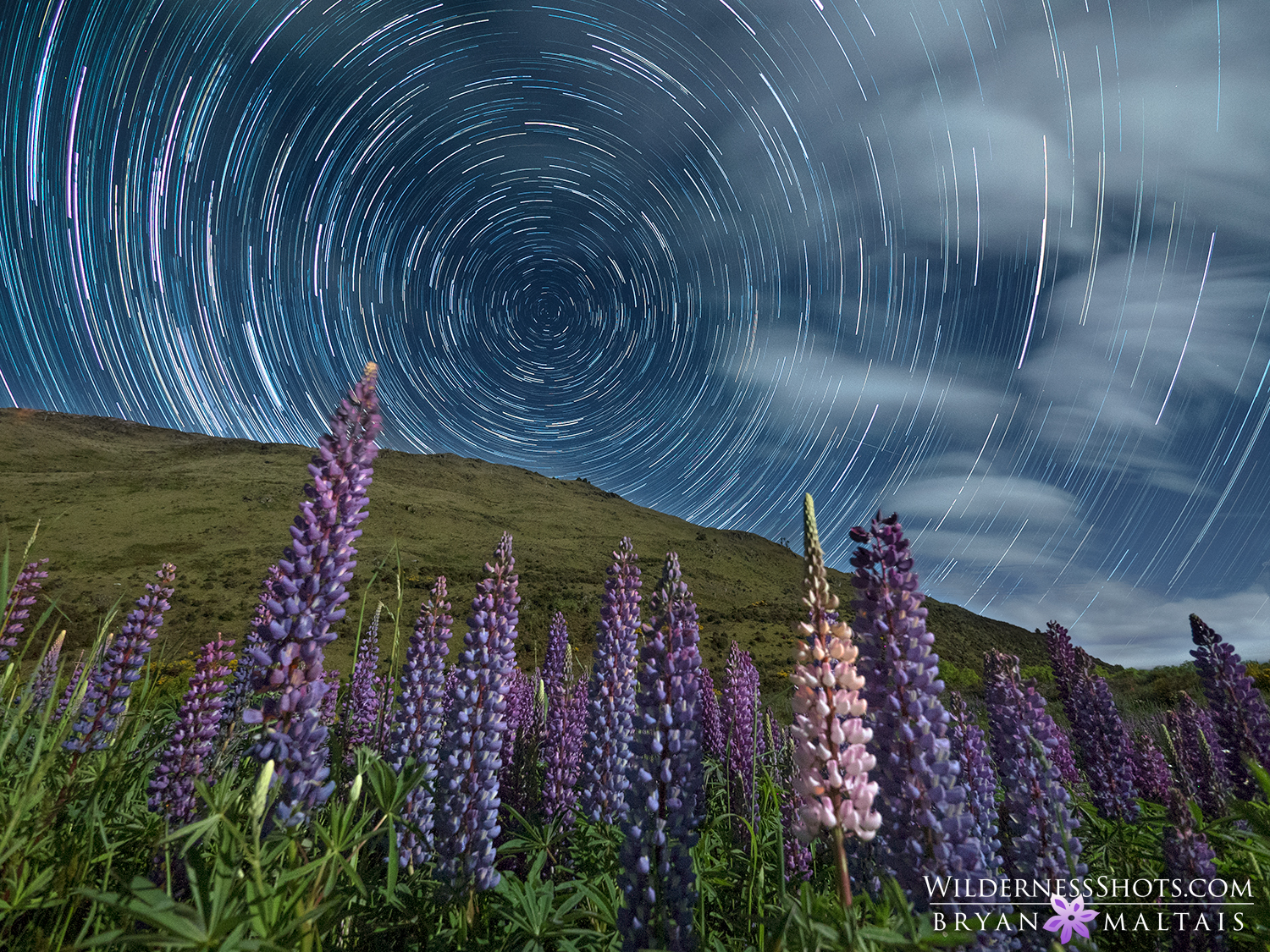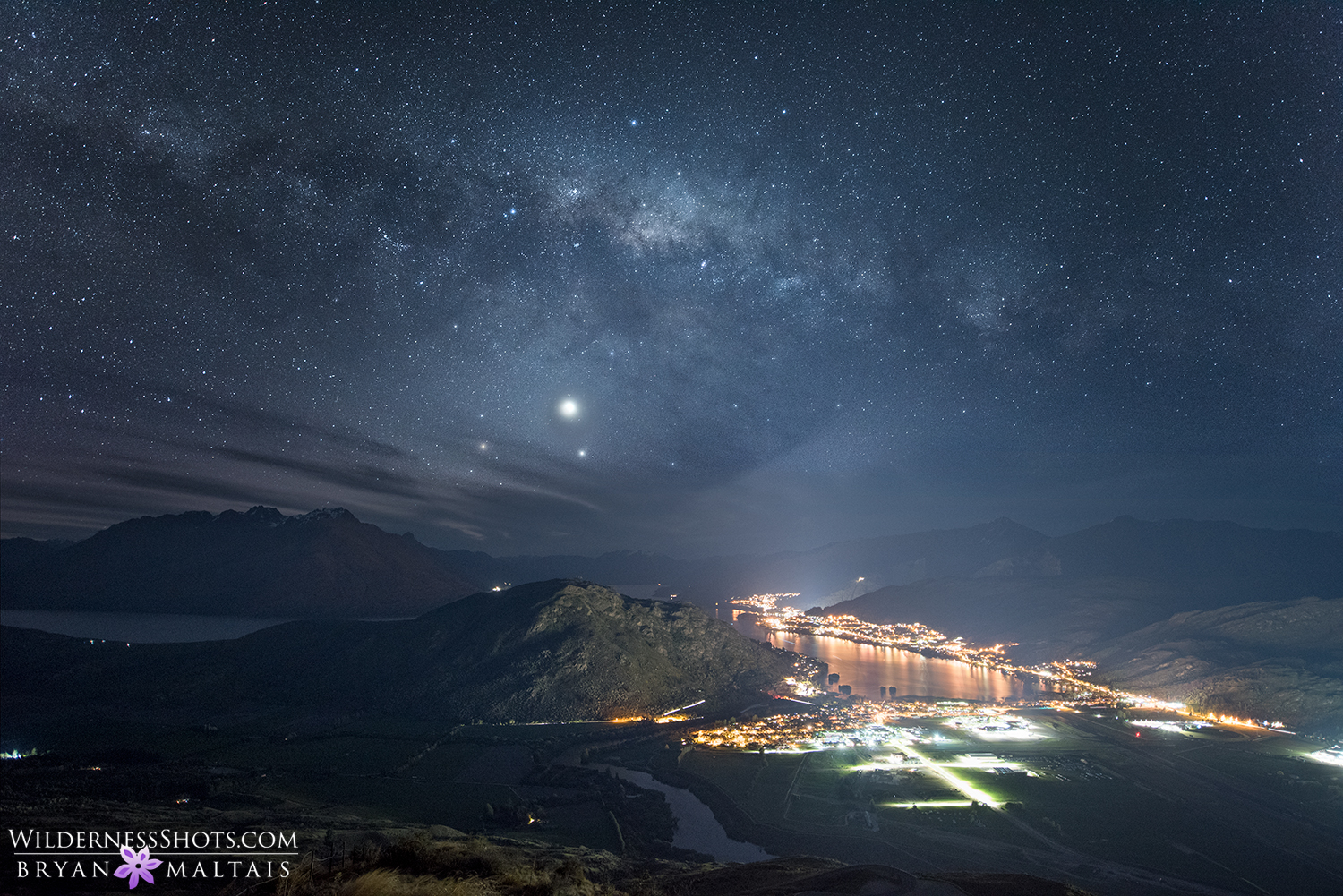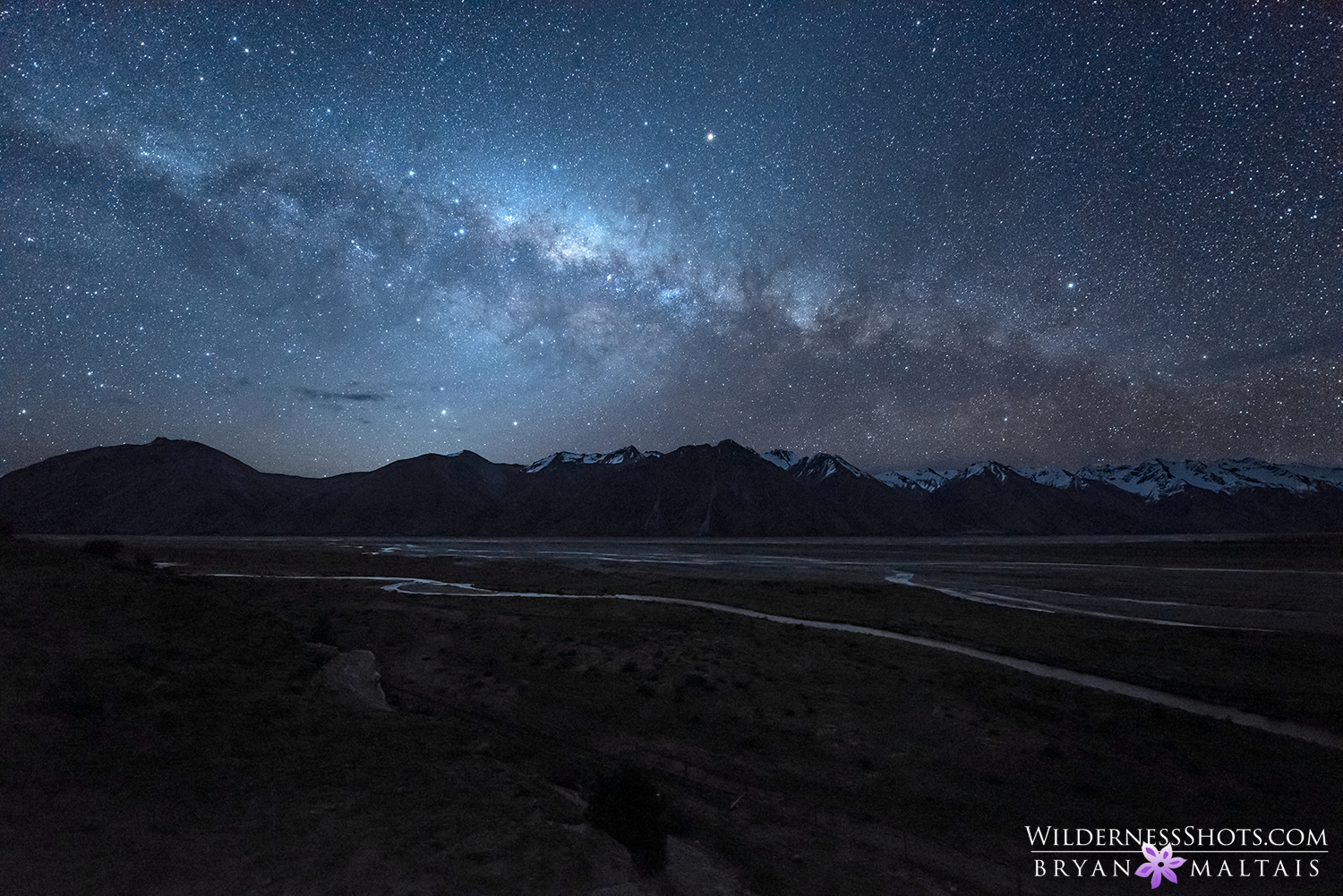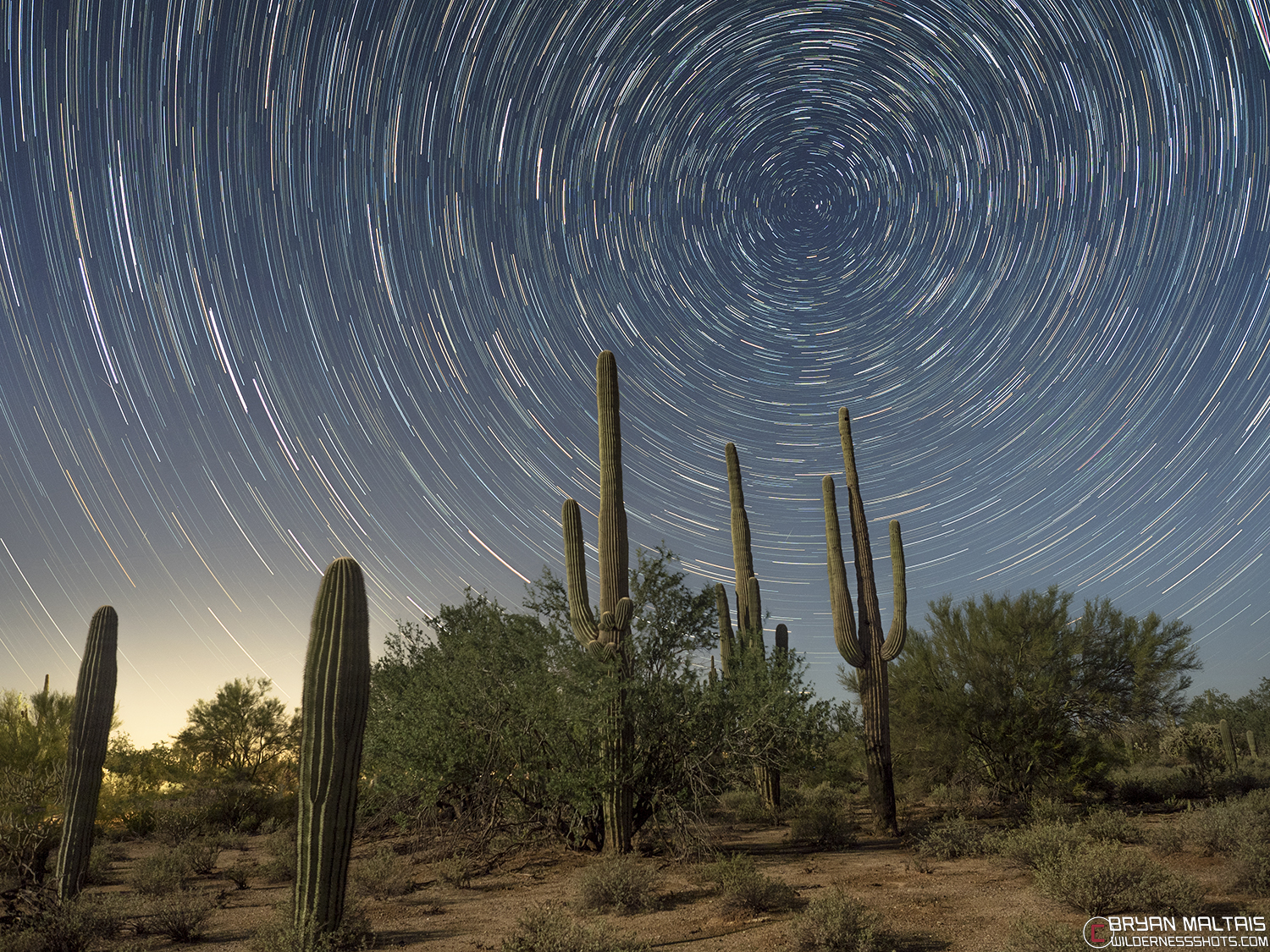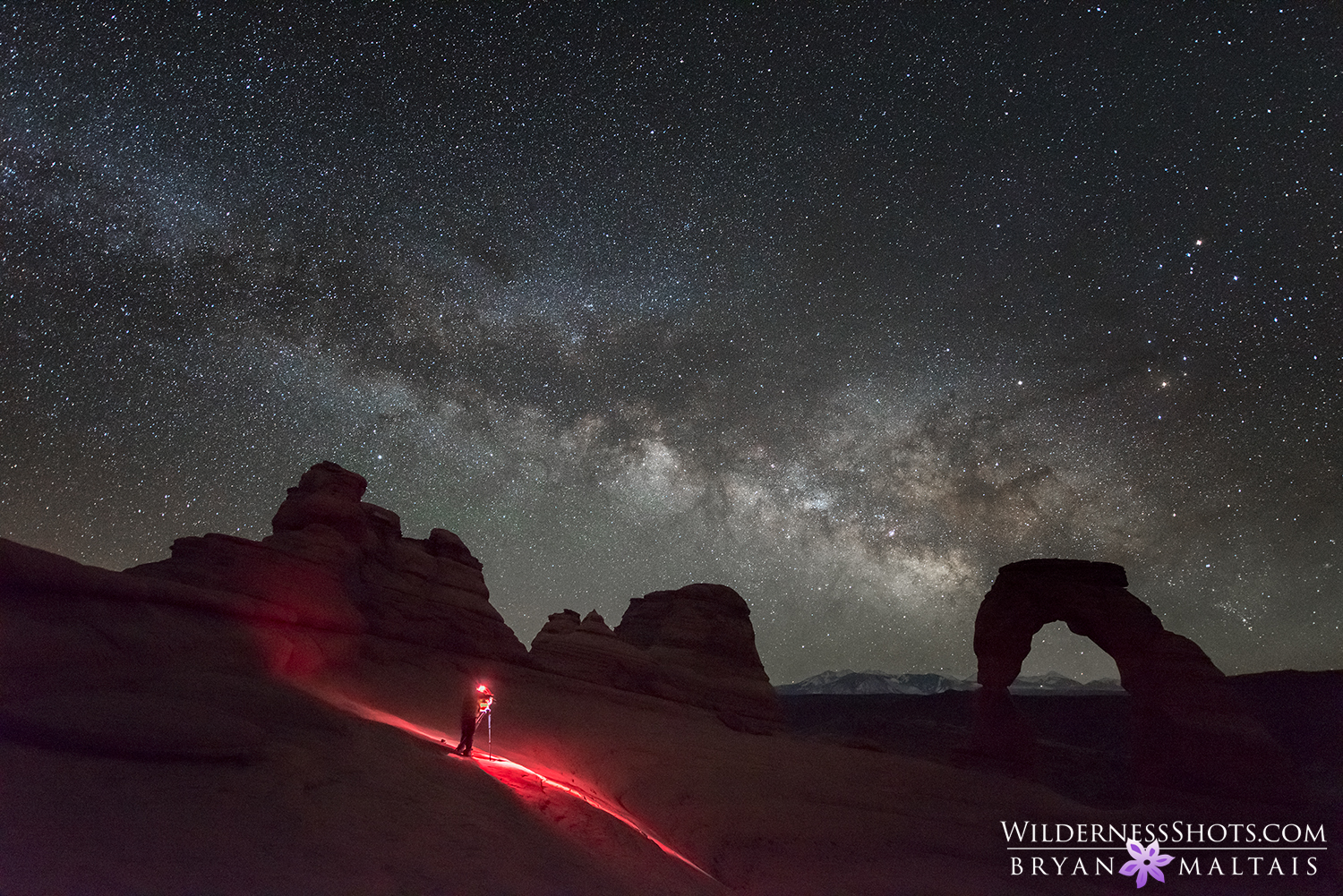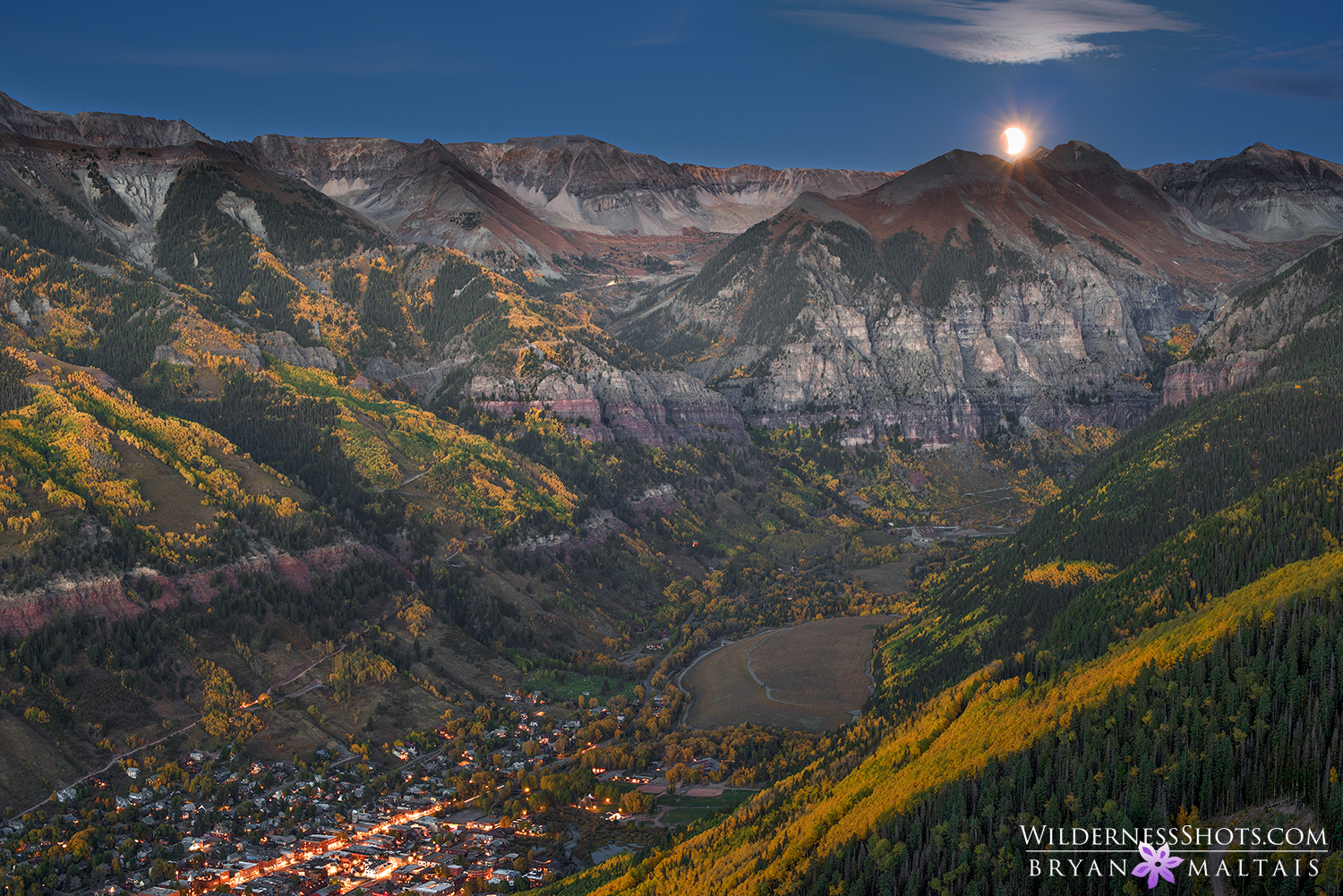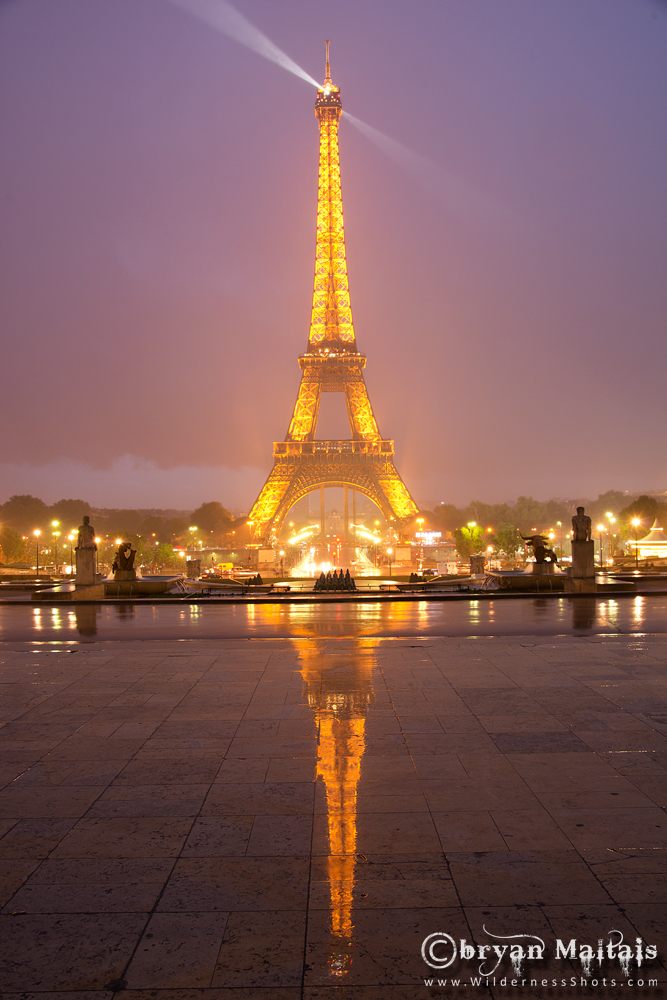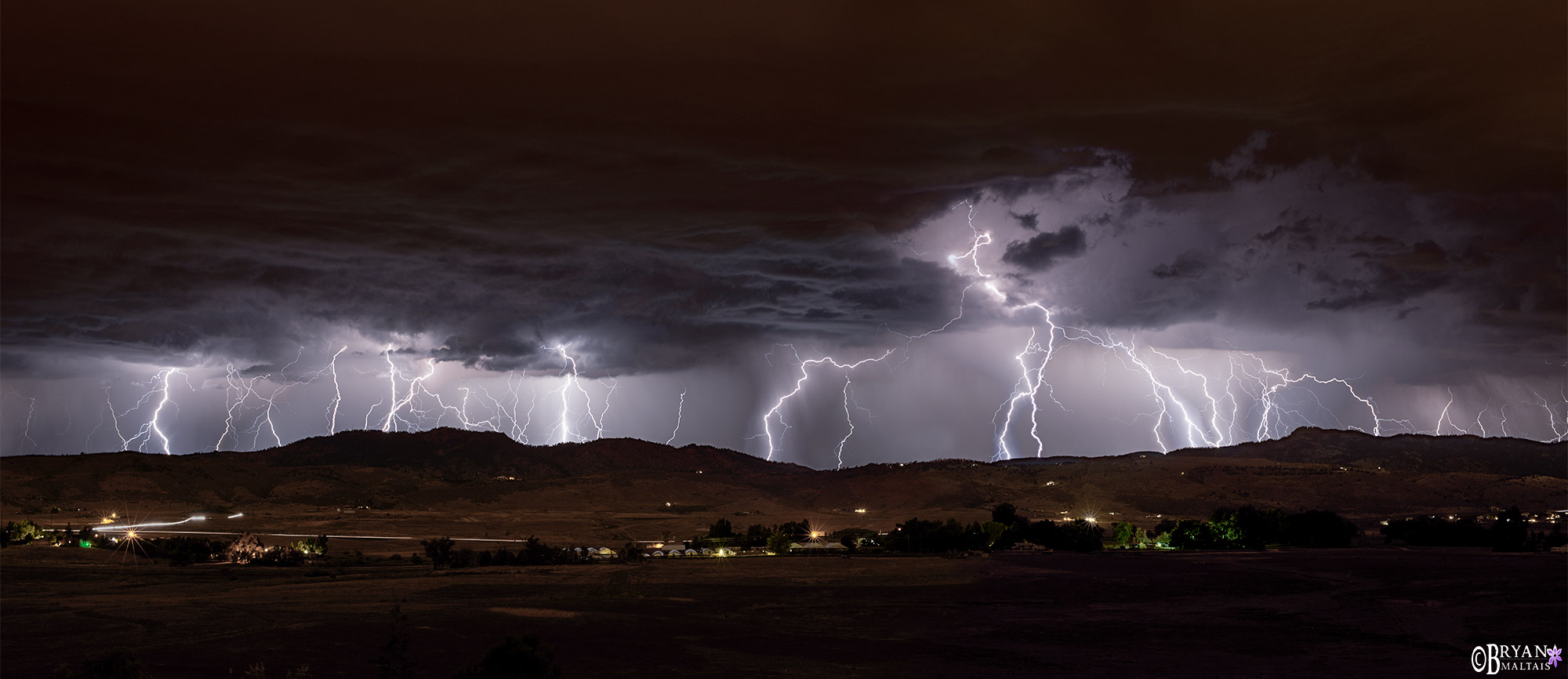In the case of night photography of the Milky Way, I must create these images beyond the reach of heavy light pollution. In Colorado, the deeper west into the Rocky Mountains, the better. Moab, Utah is also a great place for night photography of the stars because it’s dark, and has interesting rock formations in the desert. Besides a dark sky, a neat foreground with the Milky Way above makes for a more interesting photo. This is a challenge because the Milky Way rises in the Southeast sky, and moves west throughout the night. You must choose a specific location that fits this alignment. You can’t capture the Milky Way and stars at their brightest on any night; you must plan it around a new Moon or after the Moon has set.
Photographing by day provides enough light to use all of the camera’s settings at their maximum capabilities. Night photography is technically challenging because low light limits the camera’s capabilities. For example, when photographing the Milky Way, you have to keep the shutter speed under 30 seconds to prevent the stars from trailing (the shorter the better). To gather enough light to expose the scene in under 30 seconds, the camera must use a wide f/stop and high ISO. What that means is that star photography is a constant battle against shallow depth of field and digital graininess, called noise.
I do most of my night photography using a wide-angle f/2.8 lens. The fast f/2.8 aperture lets in a lot of light, which allows shutter speeds under 30 seconds, and a lower ISO. Wide angle lenses also have tremendous depth of field. Even at f/2.8, most of the photo is in focus. And because wide angle lenses make things appear smaller than they really are, it de-magnifies the stars’ movement across the sky, called star trailing.
Interested in photographing the milky way yourself? Check out my complete guide to photographing the night sky here.

